Fiona Ingram's Blog, page 52
November 14, 2012
Apocalypse Now?
Given that we are creeping closer to the Mayan calandar's predicted catastrophic date of 21 December 2012, Have you ever wondered what it’s all about? Why are we here? Where did we come from? Where are we heading? Given the chaos, crime, pollution and society’s troubles, are the old biblical prophecies correct and the hellfire and damnation scenario awaits us when the end of the world comes? Recently I read and reviewed Alpha to Omega: Journey to the End of Time for some answers.
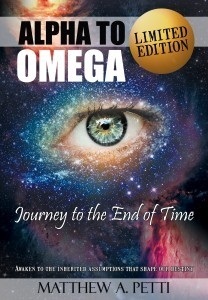 Author Matthew Petti formulates a fascinating theory that only by knowing where we came from do we have an idea of where we are heading. In this book, he sets out to prove our true ancestors. Our flaws as humans, and our failure to change, arise from our historical thinking. Yes, we are simply repeating what we have learned. Today’s chaotic world mirrors the cumulative effects of the unchanging flaws in our most basic assumptions. Beliefs about God, our origins, human history and the hereafter are deeply embedded into the collective mind through the inheritance of age-old teachings and behaviors. The author investigates the metaphysics of faith, and why old beliefs have failed humankind in a modern world. This includes as analysis of the Book of Revelations as an indication of what may (or may not) transpire if the world continues on its headlong course of destruction.
Author Matthew Petti formulates a fascinating theory that only by knowing where we came from do we have an idea of where we are heading. In this book, he sets out to prove our true ancestors. Our flaws as humans, and our failure to change, arise from our historical thinking. Yes, we are simply repeating what we have learned. Today’s chaotic world mirrors the cumulative effects of the unchanging flaws in our most basic assumptions. Beliefs about God, our origins, human history and the hereafter are deeply embedded into the collective mind through the inheritance of age-old teachings and behaviors. The author investigates the metaphysics of faith, and why old beliefs have failed humankind in a modern world. This includes as analysis of the Book of Revelations as an indication of what may (or may not) transpire if the world continues on its headlong course of destruction.This is a controversial book. The author delves into ancient history (including prehistory and Biblical history), archaeology, geography, myths, and legends to link together a collective mind-set or ethos for human society from those small beginnings many thousands of years ago. One may or may not believe in the supremacy of angels and the workings of heaven in human affairs, but Matthew Petti puts forward an intelligent and logical argument to substantiate his theories. He discusses his ideas of the ‘God’ spirit within humans, a controversial topic on its own, including free will and God’s will, and the concept of obedience to a higher power. To fully appreciate the author’s thinking it’s better to either have belief in some higher power and acceptance of Biblical references and characters, or else (if one is an atheist/agnostic) to suspend disbelief and simply read this book as a fascinating investigation of man’s possible superhuman and human origins. Well-researched and -argued, the book is a journey in itself for anyone interested in our physical origins and spiritual development.
I enjoyed this book because I find ancient history and man’s origins fascinating. I also decided to ask the author a few questions about it.
1. What made you write this book? You’ve done a huge amount of research and put a lot into it – there must be something driving your work.
 Author Matthew PettiMy lifelong search for meaning to our existence began at the age of 22. One summer evening in 1977, while driving on an open highway, I had a thought, “There really is a God.” This wasn’t new to me, having been raised Catholic, attending 12 years of Catholic School and following all the rituals of the religion. As I began to agree with the thought, it echoed with an extreme profoundness and suddenly I found myself gasping for air as a surge of new conceptual information began to flood my mind and overwhelm me. I couldn’t assimilate all the information, but an INSATIABLE curiosity to dig deeper into the book of Revelation immediately ensued.
Author Matthew PettiMy lifelong search for meaning to our existence began at the age of 22. One summer evening in 1977, while driving on an open highway, I had a thought, “There really is a God.” This wasn’t new to me, having been raised Catholic, attending 12 years of Catholic School and following all the rituals of the religion. As I began to agree with the thought, it echoed with an extreme profoundness and suddenly I found myself gasping for air as a surge of new conceptual information began to flood my mind and overwhelm me. I couldn’t assimilate all the information, but an INSATIABLE curiosity to dig deeper into the book of Revelation immediately ensued.2. The idea of an ancient higher civilization has fascinated many people. How old do you think this civilization is, and why do you think there is so little left of their existence (apart from the monumental architecture)?
The remnants of ancient advancements dating to about 15 to 20,000 years ago, which have been found on the Yucatán Peninsula, Mesoamerica, Easter Island and Machu Picchu, just to name a few, are a thorn in the side to the archaeologists, scientists and historians who preach the linear view of evolution and human development. The problem with other theories, which attempt to explain these advancements as the result of a recent previous civilization eradicated by some sort of cataclysm, is that they cannot be supported by prevailing scientific evidence proving that never in the history of humans (1.5 million years) has the world and its inhabitants been completely annihilated.
 Ancient alien theory has emerged as the only explanation to the architectural wonders discovered because it circumvents the scientific evidence. The traditional scientific viewpoint holds that mankind was strong enough and willful enough to account for many of the ancient mysteries. Ironically, the most glaring contradictory evidence is swept under the rug in an effort to maintain the support of uninformed constituents.
Ancient alien theory has emerged as the only explanation to the architectural wonders discovered because it circumvents the scientific evidence. The traditional scientific viewpoint holds that mankind was strong enough and willful enough to account for many of the ancient mysteries. Ironically, the most glaring contradictory evidence is swept under the rug in an effort to maintain the support of uninformed constituents.Meanwhile, the religious viewpoint claims a great flood occurred, which totally wiped out a society, except for eight people and hundreds of thousands of animals on board a ship, who were somehow able to completely repopulate the Earth. Once again, scientific evidence proves that this could not have happened—at least not in the last 1.5 million years— while common sense tells us that it would've been impossible to board a ship with seven pairs of every species of animals on earth.
Since there is no evidence of a supreme society in our recent history, but instead, remnants of advanced achievements, which surpass both the technologies available during those times and today, then we can assume that the gods and demigods of ancient myths were the offspring of those who survived a cataclysm of 7 million years ago.
 3. Why can’t we recreate the level of achievements they left behind, given our computer advantages, and other developments that would surely outweigh the flaws you say are inherited from the past and a previous, repeated mindset.
3. Why can’t we recreate the level of achievements they left behind, given our computer advantages, and other developments that would surely outweigh the flaws you say are inherited from the past and a previous, repeated mindset.The flaws inherited from the past have been in our misinterpretation of events and circumstances. Our repeated mindset is the battle between truth and belief. What we accept as truth is limited by what we can imagine as possible. What we imagine as possible is limited by what is presented and agreed upon. What is presented and agreed-upon is limited by the scientific and not so scientific assessment of the information and the predispositions of an authority.
4. I read authors like Andrew Collins and Graham Hancock who also share your interests. What do you think of their investigations and conclusions?
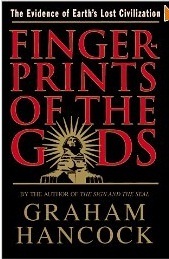 Their investigations, among others, were paramount in providing the evidence I needed to faithfully assert that science and archaeology are equally as biased in their determination of history as religion. It is equally absurd to believe in the 6000-year-old creation story as it is to believe that the Egyptians built the Great Pyramid. Thanks to them and others like them, I was able to provide my theory.
Their investigations, among others, were paramount in providing the evidence I needed to faithfully assert that science and archaeology are equally as biased in their determination of history as religion. It is equally absurd to believe in the 6000-year-old creation story as it is to believe that the Egyptians built the Great Pyramid. Thanks to them and others like them, I was able to provide my theory.5. Your book is heavily based on the Bible, and your discussions of the angelic/divine relationship between heaven and earth reflect this. How many people think of the Bible as a history book, not just a book of inspired writings from long ago?
I'm not sure how many people, as a percentage, view the Bible as a history book. I don’t want people to think my book is really “based” on the Bible, because that might imply that I accept the literal translation. My book is a NEW way of explaining it and other pertinent mysteries relating to our past and the inevitable future to which it is bound. The book of Revelation is a cryptic message that has unveiled more than just the future to me.
6. The Book of Revelation features strongly in your work. Do you think it’s possible to avoid the apocalyptic forecast of what will come, given the nuclear arms race, the declining state of the planet, and man’s inhumanity to man? Or is it too late?
All events and circumstances are shaped by Truth to reveal the errors in our beliefs. If we really believe that we create our own destiny, then our choices and actions will affect our future both individually and collectively. All of our choices and actions are based upon our beliefs. If there are errors in our beliefs or assumptions, we will make the wrong choices, and suffer the consequences.
War, devastation and all of life's tragedies are inevitable until we completely awaken to Truth. The events, which have always been attributed to God's judgment, are really a gift that will eventually lead us back to the Omega, which is absolute fulfillment of Truth and Knowledge. So yes, the events are unavoidable but so is the return to Paradise!
Published on November 14, 2012 06:41
November 4, 2012
10 Reasons Why We Love James Bond
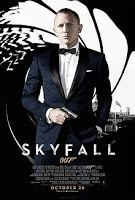 Daniel Craig
Daniel Craig
The recent James Bond film festival on television and the 2012 release of Skyfall sparked this post. Who is James Bond and why do we love him? The movies are possibly the best way the world has come to know and appreciate Bond.
Bond the Moneymaker : The James Bond film series is a British series of spy films based on the fictional character of MI6 agent James Bond (code designation "007"), who originally appeared in a series of books by Ian Fleming. Earlier films were based on Fleming's novels and short stories, followed later by films with original storylines. It is one of the longest continually running film series in history, having been in ongoing production from 1962 to the present (with a six-year hiatus between 1989 and 1995). In that time, Eon Productions has produced 23 films, at an average of about one every two years, usually produced at Pinewood Studios. The series has grossed just over US $5 billion to date, making it the second-highest-grossing film series (behind Harry Potter), and the single most successfully adjusted for inflation. Six actors have portrayed 007 in the Eon series, with the Sean Connery films largely setting the style and mood of the series, and Roger Moore starring in the most films.
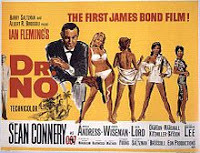 Sean Connery
Sean Connery
Bond the Character : In Bond and Other Conspiracy Theories journo Stephen Kelly says: “There’s always been something a bit off about that suave, mysterious, sexually charged murderer, James Bond: he appears to be a shape-shifting immortal. Or at least that’s what the franchise suggests, what with the same man being played by six people over 50 years, making for quite the hefty 00-pension. But where pop culture logic is broken, there’s a fan theory to fix it. In this case: that James Bond is not a single man, but a code name given to agents who fit a certain profile.
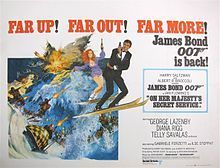 George Lazenby Makes sense, doesn’t it? For even if this is a profile to which psychologists refer as the Dark Triad of the psyche—a combination of Machiavellianism, narcissism, and a psychopathic disregard for life—each incarnation does come with its own set of characteristics.
George Lazenby Makes sense, doesn’t it? For even if this is a profile to which psychologists refer as the Dark Triad of the psyche—a combination of Machiavellianism, narcissism, and a psychopathic disregard for life—each incarnation does come with its own set of characteristics.
Sean Connery, for instance, was smooth and deadpan; George Lazenby: clunky and… forgettable; Roger Moore had fun with the role; Timothy Dalton preferred a serious approach; cigar-smoking Pierce Brosnan played it rugged and old-fashioned; whereas Daniel Craig, moonlighting from his full-time job of protruding out of Mount Rushmore, portrays a more tortured, layered Bond.”
Bond the Hero : For me, James Bond is the hero we love. He’s flawed, he’s brave, he is what we all want—what more can I say… he’s a hero!
Here are my ten reasons why James Bond is the perfect hero. And heroes, to be heroes, are not perfect!
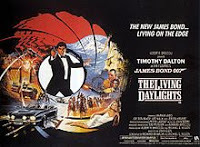 Timothy Dalton1. He sets out to be a hero, although he may deny it.
Timothy Dalton1. He sets out to be a hero, although he may deny it.
2. He saves the world, no matter what the baddies throw at him.
3. He is flawed. He makes mistakes, he lets his heart rule his head, and he always goes back to save the girl.
4. He suffers loss, pain, and anguish. Sometimes a friend dies, sometimes the woman he loves dies, and it cuts him to the core of his being.
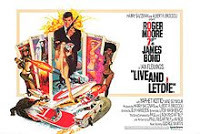 Roger Moore5. He always gets the girl in the end. Despite the fact we know he is a womaniser/playboy/Casanova, we want him to ride/fly/float off into the sunset with the Bond girl in his arms (and all the actresses who’ve played a Bond girl say the same thing!)
Roger Moore5. He always gets the girl in the end. Despite the fact we know he is a womaniser/playboy/Casanova, we want him to ride/fly/float off into the sunset with the Bond girl in his arms (and all the actresses who’ve played a Bond girl say the same thing!)
6. He has a great sense of humour. Dry wit and a martini shaken not stirred are his trademarks. He laughs in the face of death and usually flings a (cheesy) quip at his nemesis.
7. He loves gadgets, and boy does Q make sure he has plenty of them. Cars that can assume an invisibility cloak as well as packing an arsenal in the trunk, exploding pens, belt buckles with escape wires, watches that can set off bombs, even watches with lasers installed—Q has a gadget for every day of Bond’s week.
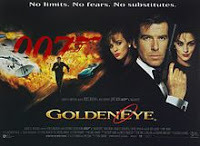 Pierce Brosnan8. He is fanatically loyal to Queen and country. He serves the crown and he will die for his country’s security. You can’t get more loyal than that.
Pierce Brosnan8. He is fanatically loyal to Queen and country. He serves the crown and he will die for his country’s security. You can’t get more loyal than that.
9. He has feelings although he may hide them under that impenetrable mask.
10. If he could, he’d date Miss Moneypenny!
So, out of all the Bond actors, who portray Bond the best?

 Daniel Craig
Daniel Craig The recent James Bond film festival on television and the 2012 release of Skyfall sparked this post. Who is James Bond and why do we love him? The movies are possibly the best way the world has come to know and appreciate Bond.
Bond the Moneymaker : The James Bond film series is a British series of spy films based on the fictional character of MI6 agent James Bond (code designation "007"), who originally appeared in a series of books by Ian Fleming. Earlier films were based on Fleming's novels and short stories, followed later by films with original storylines. It is one of the longest continually running film series in history, having been in ongoing production from 1962 to the present (with a six-year hiatus between 1989 and 1995). In that time, Eon Productions has produced 23 films, at an average of about one every two years, usually produced at Pinewood Studios. The series has grossed just over US $5 billion to date, making it the second-highest-grossing film series (behind Harry Potter), and the single most successfully adjusted for inflation. Six actors have portrayed 007 in the Eon series, with the Sean Connery films largely setting the style and mood of the series, and Roger Moore starring in the most films.
 Sean Connery
Sean Connery Bond the Character : In Bond and Other Conspiracy Theories journo Stephen Kelly says: “There’s always been something a bit off about that suave, mysterious, sexually charged murderer, James Bond: he appears to be a shape-shifting immortal. Or at least that’s what the franchise suggests, what with the same man being played by six people over 50 years, making for quite the hefty 00-pension. But where pop culture logic is broken, there’s a fan theory to fix it. In this case: that James Bond is not a single man, but a code name given to agents who fit a certain profile.
 George Lazenby Makes sense, doesn’t it? For even if this is a profile to which psychologists refer as the Dark Triad of the psyche—a combination of Machiavellianism, narcissism, and a psychopathic disregard for life—each incarnation does come with its own set of characteristics.
George Lazenby Makes sense, doesn’t it? For even if this is a profile to which psychologists refer as the Dark Triad of the psyche—a combination of Machiavellianism, narcissism, and a psychopathic disregard for life—each incarnation does come with its own set of characteristics.Sean Connery, for instance, was smooth and deadpan; George Lazenby: clunky and… forgettable; Roger Moore had fun with the role; Timothy Dalton preferred a serious approach; cigar-smoking Pierce Brosnan played it rugged and old-fashioned; whereas Daniel Craig, moonlighting from his full-time job of protruding out of Mount Rushmore, portrays a more tortured, layered Bond.”
Bond the Hero : For me, James Bond is the hero we love. He’s flawed, he’s brave, he is what we all want—what more can I say… he’s a hero!
Here are my ten reasons why James Bond is the perfect hero. And heroes, to be heroes, are not perfect!
 Timothy Dalton1. He sets out to be a hero, although he may deny it.
Timothy Dalton1. He sets out to be a hero, although he may deny it.2. He saves the world, no matter what the baddies throw at him.
3. He is flawed. He makes mistakes, he lets his heart rule his head, and he always goes back to save the girl.
4. He suffers loss, pain, and anguish. Sometimes a friend dies, sometimes the woman he loves dies, and it cuts him to the core of his being.
 Roger Moore5. He always gets the girl in the end. Despite the fact we know he is a womaniser/playboy/Casanova, we want him to ride/fly/float off into the sunset with the Bond girl in his arms (and all the actresses who’ve played a Bond girl say the same thing!)
Roger Moore5. He always gets the girl in the end. Despite the fact we know he is a womaniser/playboy/Casanova, we want him to ride/fly/float off into the sunset with the Bond girl in his arms (and all the actresses who’ve played a Bond girl say the same thing!) 6. He has a great sense of humour. Dry wit and a martini shaken not stirred are his trademarks. He laughs in the face of death and usually flings a (cheesy) quip at his nemesis.
7. He loves gadgets, and boy does Q make sure he has plenty of them. Cars that can assume an invisibility cloak as well as packing an arsenal in the trunk, exploding pens, belt buckles with escape wires, watches that can set off bombs, even watches with lasers installed—Q has a gadget for every day of Bond’s week.
 Pierce Brosnan8. He is fanatically loyal to Queen and country. He serves the crown and he will die for his country’s security. You can’t get more loyal than that.
Pierce Brosnan8. He is fanatically loyal to Queen and country. He serves the crown and he will die for his country’s security. You can’t get more loyal than that. 9. He has feelings although he may hide them under that impenetrable mask.
10. If he could, he’d date Miss Moneypenny!
So, out of all the Bond actors, who portray Bond the best?
Published on November 04, 2012 07:05
October 18, 2012
POV: Three's a Crowd!
Point of View is something that besets and often bedevils many writers. It took me ages to work out the nuts and bolts of this technique. However, I could not explain it to anyone in terms that they would understand. Luckily for writers out there, here's an excellent article by Randy Ingermanson, and all is revealed.
Is Headhopping A Sin?
Every so often, the issue of "headhopping" comes up among writers, and the fur soon begins flying. It came up recently in a circle of novelists I belong to. Some writers insist that there is no sin more vile than headhopping, except possibly teaching the cat how to smoke. Other writers claim that headhopping is an acceptable practice in romance, where many readers like it and a few editors even insist on it.
Is headhopping a sin? If it's so horrible, then why does Joe Bigname Author hop heads like crazy? Is headhopping just another "gotcha" invented by writing teachers to put newbie writers in knots? Isn't headhopping just the same thing as the omniscient viewpoint?
First things first -- we need to define "headhopping."
To do that, let's review the main alternatives. The two most common points of view in fiction are first-person and third-person .
 1st and 3rd person POVIn first-person POV, the author writes as if she is one of the characters, using the pronouns "I" and "me" to refer to that character. When you write in first-person, you put your reader firmly inside the head of that one character and it would be unnatural to get out.In third-person POV (the most common POV these days), the author chooses one particular character in each scene to be the viewpoint character. The author uses the pronouns "he" and "him" or else "she" and "her" to refer to that character.When you write in third-person correctly, you put your reader firmly inside the head of that one character. You show only what that character can see, hear, touch, taste, smell, or feel. Nothing more. So third-person is very much like first-person, except for the pronouns you use.
1st and 3rd person POVIn first-person POV, the author writes as if she is one of the characters, using the pronouns "I" and "me" to refer to that character. When you write in first-person, you put your reader firmly inside the head of that one character and it would be unnatural to get out.In third-person POV (the most common POV these days), the author chooses one particular character in each scene to be the viewpoint character. The author uses the pronouns "he" and "him" or else "she" and "her" to refer to that character.When you write in third-person correctly, you put your reader firmly inside the head of that one character. You show only what that character can see, hear, touch, taste, smell, or feel. Nothing more. So third-person is very much like first-person, except for the pronouns you use.
Either first-person or third-person puts your reader on intimate terms with the viewpoint character for the course of any given scene. This makes it easy to give your reader a Powerful Emotional Experience, which I believe is the main goal of writing fiction.
Now of course it's possible that a writer will do a bad job of writing either first-person or third-person, which means that the reader will have no Powerful Emotional Experience. But tens of thousands of professional novelists use these viewpoints effectively because they work.
 Two or more POV Now we can define headhopping. Headhopping is like third-person, except that the author uses two or more viewpoint characters within a single scene. In headhopping, you put your reader firmly inside the head of one character for a while and then hop into another character's head for a while.
Two or more POV Now we can define headhopping. Headhopping is like third-person, except that the author uses two or more viewpoint characters within a single scene. In headhopping, you put your reader firmly inside the head of one character for a while and then hop into another character's head for a while.
Let's look at those questions we raised at the beginning of this article:
Is headhopping OK?
My own opinion is that it's OK to do this IF you do it well. But it isn't easy to do it well, for two reasons.
First, those pesky transitions from one head to another are hard to get right. If you confuse the reader, then that's a speed bump in the reading experience and that's bad.Second, even if you do the transitions well, doing them too often will make your reader feel jerked around. Why does Joe Bigname Author use headhopping in his novel?
Good question. Some authors actually don't know any better (and neither do some editors). Some authors know that headhopping is risky but do it anyway because they believe they can do it well and the rewards are worth the risks.
Is headhopping just an invention of selfish writing teachers who want to earn more money by putting up more roadblocks for new writers?
 Three's a crowd!Not that I can tell. Headhopping is hard to do well, and very often it just plain doesn't work. Headhopping by novice writers almost always doesn't work. Writing teachers spend most of their time working with novice writers, so they spend a lot of time telling them not to hop heads.
Three's a crowd!Not that I can tell. Headhopping is hard to do well, and very often it just plain doesn't work. Headhopping by novice writers almost always doesn't work. Writing teachers spend most of their time working with novice writers, so they spend a lot of time telling them not to hop heads.
Is headhopping exactly the same thing as the omniscient viewpoint that was used so successfully by the great 19th century writers?
In my opinion, no. I believe that omniscient viewpoint means that the narrator is actually omniscient and can know things that NONE of the characters know. I am tempted to say that all right-thinking people must agree with me, but I know at least one writing teacher who believes that headhopping is the same thing as omniscient.
I'm afraid that rational discussion will never settle this argument. However, kicking, biting, scratching, and hair-pulling might, so I have hope that someday all writers will agree with me on this point.
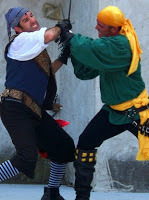 Let's fight about it!
Let's fight about it!
So should you hop heads? Will you suffer eternal torment if you indulge in the forbidden fruit of headhopping? My own opinion is that if you're a new writer, then it's best to avoid headhopping, for two reasons:
Headhopping requires that you master third person viewpoint AND that you master transitions from one head to the next. It's easier to master one skill than two.Some editors will reject you outright for headhopping. Once you've learned to write third-person Xtremely well, then you'll have the skills to try hopping heads when you have a scene where you believe it makes sense.
At the very least, if you're going to hop heads, you should be aware that you're doing it, you should have a reason to do so, and you should make it work.
The goal in writing fiction is to give your reader a Powerful Emotional Experience . Do whatever it takes to do that.
Award-winning novelist Randy Ingermanson, "the Snowflake Guy," publishes the free monthly Advanced Fiction Writing E-zine, with more than 32,000 readers. If you want to learn the craft and marketing of fiction, AND make your writing more valuable to editors, AND have FUN doing it, visit http://www.AdvancedFictionWriting.com Download your free Special Report on Tiger Marketing and get a free 5-Day Course in How To Publish a Novel.
Randy Ingermanson Publisher, Advanced Fiction Writing E-zine http://www.AdvancedFictionWriting.com/ezine
Is Headhopping A Sin?
Every so often, the issue of "headhopping" comes up among writers, and the fur soon begins flying. It came up recently in a circle of novelists I belong to. Some writers insist that there is no sin more vile than headhopping, except possibly teaching the cat how to smoke. Other writers claim that headhopping is an acceptable practice in romance, where many readers like it and a few editors even insist on it.
Is headhopping a sin? If it's so horrible, then why does Joe Bigname Author hop heads like crazy? Is headhopping just another "gotcha" invented by writing teachers to put newbie writers in knots? Isn't headhopping just the same thing as the omniscient viewpoint?
First things first -- we need to define "headhopping."
To do that, let's review the main alternatives. The two most common points of view in fiction are first-person and third-person .
 1st and 3rd person POVIn first-person POV, the author writes as if she is one of the characters, using the pronouns "I" and "me" to refer to that character. When you write in first-person, you put your reader firmly inside the head of that one character and it would be unnatural to get out.In third-person POV (the most common POV these days), the author chooses one particular character in each scene to be the viewpoint character. The author uses the pronouns "he" and "him" or else "she" and "her" to refer to that character.When you write in third-person correctly, you put your reader firmly inside the head of that one character. You show only what that character can see, hear, touch, taste, smell, or feel. Nothing more. So third-person is very much like first-person, except for the pronouns you use.
1st and 3rd person POVIn first-person POV, the author writes as if she is one of the characters, using the pronouns "I" and "me" to refer to that character. When you write in first-person, you put your reader firmly inside the head of that one character and it would be unnatural to get out.In third-person POV (the most common POV these days), the author chooses one particular character in each scene to be the viewpoint character. The author uses the pronouns "he" and "him" or else "she" and "her" to refer to that character.When you write in third-person correctly, you put your reader firmly inside the head of that one character. You show only what that character can see, hear, touch, taste, smell, or feel. Nothing more. So third-person is very much like first-person, except for the pronouns you use.Either first-person or third-person puts your reader on intimate terms with the viewpoint character for the course of any given scene. This makes it easy to give your reader a Powerful Emotional Experience, which I believe is the main goal of writing fiction.
Now of course it's possible that a writer will do a bad job of writing either first-person or third-person, which means that the reader will have no Powerful Emotional Experience. But tens of thousands of professional novelists use these viewpoints effectively because they work.
 Two or more POV Now we can define headhopping. Headhopping is like third-person, except that the author uses two or more viewpoint characters within a single scene. In headhopping, you put your reader firmly inside the head of one character for a while and then hop into another character's head for a while.
Two or more POV Now we can define headhopping. Headhopping is like third-person, except that the author uses two or more viewpoint characters within a single scene. In headhopping, you put your reader firmly inside the head of one character for a while and then hop into another character's head for a while.Let's look at those questions we raised at the beginning of this article:
Is headhopping OK?
My own opinion is that it's OK to do this IF you do it well. But it isn't easy to do it well, for two reasons.
First, those pesky transitions from one head to another are hard to get right. If you confuse the reader, then that's a speed bump in the reading experience and that's bad.Second, even if you do the transitions well, doing them too often will make your reader feel jerked around. Why does Joe Bigname Author use headhopping in his novel?
Good question. Some authors actually don't know any better (and neither do some editors). Some authors know that headhopping is risky but do it anyway because they believe they can do it well and the rewards are worth the risks.
Is headhopping just an invention of selfish writing teachers who want to earn more money by putting up more roadblocks for new writers?
 Three's a crowd!Not that I can tell. Headhopping is hard to do well, and very often it just plain doesn't work. Headhopping by novice writers almost always doesn't work. Writing teachers spend most of their time working with novice writers, so they spend a lot of time telling them not to hop heads.
Three's a crowd!Not that I can tell. Headhopping is hard to do well, and very often it just plain doesn't work. Headhopping by novice writers almost always doesn't work. Writing teachers spend most of their time working with novice writers, so they spend a lot of time telling them not to hop heads. Is headhopping exactly the same thing as the omniscient viewpoint that was used so successfully by the great 19th century writers?
In my opinion, no. I believe that omniscient viewpoint means that the narrator is actually omniscient and can know things that NONE of the characters know. I am tempted to say that all right-thinking people must agree with me, but I know at least one writing teacher who believes that headhopping is the same thing as omniscient.
I'm afraid that rational discussion will never settle this argument. However, kicking, biting, scratching, and hair-pulling might, so I have hope that someday all writers will agree with me on this point.
 Let's fight about it!
Let's fight about it!So should you hop heads? Will you suffer eternal torment if you indulge in the forbidden fruit of headhopping? My own opinion is that if you're a new writer, then it's best to avoid headhopping, for two reasons:
Headhopping requires that you master third person viewpoint AND that you master transitions from one head to the next. It's easier to master one skill than two.Some editors will reject you outright for headhopping. Once you've learned to write third-person Xtremely well, then you'll have the skills to try hopping heads when you have a scene where you believe it makes sense.
At the very least, if you're going to hop heads, you should be aware that you're doing it, you should have a reason to do so, and you should make it work.
The goal in writing fiction is to give your reader a Powerful Emotional Experience . Do whatever it takes to do that.
Award-winning novelist Randy Ingermanson, "the Snowflake Guy," publishes the free monthly Advanced Fiction Writing E-zine, with more than 32,000 readers. If you want to learn the craft and marketing of fiction, AND make your writing more valuable to editors, AND have FUN doing it, visit http://www.AdvancedFictionWriting.com Download your free Special Report on Tiger Marketing and get a free 5-Day Course in How To Publish a Novel.
Randy Ingermanson Publisher, Advanced Fiction Writing E-zine http://www.AdvancedFictionWriting.com/ezine
Published on October 18, 2012 08:40
October 4, 2012
5 Easy Steps to Better Writing
John Yeoman has a novel approach to writing—he suggests a lazy 5-step program to improving your writing. Lazy? LAZY???? Does the word even feature in any dedicated writer’s vocabulary? Aren’t writers supposed to slog all hours that God gives in order to squeeze out some creative scribblings that may or may not be the next Amazon bestseller? I must admit, I feel guilty if I miss a day of writing. I read the phrase “It’s like having permanent homework” somewhere and it’s true. However, John has some very good advice in his article, which I have reproduced here with his kind permission.
A Lazy 5 Step Program to Make Your Stories Glow
Yes, and a thousand writing mavens on the web will hustle to reveal it to you. Truth is, there’s only one formula that succeeds, time and again. And here it is... the 5-step program that most top authors use, although they’ll rarely spell it out for you.
 #1. Don’t be afraid to write dross: We’ve all heard that we must write every day, and it’s true. But what shall we write? Perhaps we’re developing a story or novel. We know where it should be going, but we’re stuck for words. Solution? Write garbage. And write it fast.
#1. Don’t be afraid to write dross: We’ve all heard that we must write every day, and it’s true. But what shall we write? Perhaps we’re developing a story or novel. We know where it should be going, but we’re stuck for words. Solution? Write garbage. And write it fast.
Drop in the first phrases that come into your head. Your object is not to write great literature—just to get that wretched episode finished! There’s no point in playing word games. Not just yet. Probably you’ll junk that whole episode anyway at the final ‘cut’.
Amazingly, the garbage approach works. We have no problems going back to a page of rubbish and, with an amused sigh, editing it into something sensible. Writer’s block? Forget it. There’s no anxiety in this approach so our mind stays calm. We can hack out 1500+ words a day, without pain. Make it your goal to draft total nonsense for an hour. How can you fail? You can then have fun improving it later.
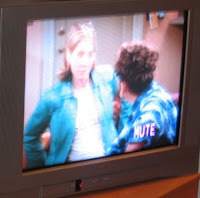 #2. Study television dramas: Now you have a great excuse for watching television. Study how the actors in sitcoms and soaps behave. Every five minutes, somebody will insult, distress or romance somebody else. Watch their faces, lips, and body movements. Also hear how their voices change. Jot it all down. True, the actors overact. But you could use that body language, toned down, in your stories.
#2. Study television dramas: Now you have a great excuse for watching television. Study how the actors in sitcoms and soaps behave. Every five minutes, somebody will insult, distress or romance somebody else. Watch their faces, lips, and body movements. Also hear how their voices change. Jot it all down. True, the actors overact. But you could use that body language, toned down, in your stories.
Also take careful note of every ‘scene hanger’, the way an episode closes. Maybe it’s an unresolved question or note of alarm. That uncertainty will tease us into the next scene, even across a commercial interlude. Adapt those scene hangers and you’ll soon have a wealth of ways to link the episodes in your own stories, so the reader stays hooked.
 #3. Act as a walking tape recorder: Christopher Isherwood inspired the phrase ‘I am a camera’. It described his work. He had reproduced, without judgement or interpretation, what he actually saw and heard in post-war Berlin. You can do that in conversations that you overhear. Take a discreet note of every colourful turn of phrase. Folk say the most amazing things that you would never be able to invent for yourself.
#3. Act as a walking tape recorder: Christopher Isherwood inspired the phrase ‘I am a camera’. It described his work. He had reproduced, without judgement or interpretation, what he actually saw and heard in post-war Berlin. You can do that in conversations that you overhear. Take a discreet note of every colourful turn of phrase. Folk say the most amazing things that you would never be able to invent for yourself.
Okay, we know that ‘real’ people do not speak the way they do in books. But you may be amazed at how often people fail to complete a sentence, or reply to a question, or even speak coherently at all. Almost all communication is done ‘between the lines’. If you get that sub-text into your stories, your characters will seem ‘real’.
 #4. Find something boring to observe: Boring? Yes. Here’s a wonderful way to make a walk productive. Stop at random, wherever nobody can see you. And just look. Are you staring at a shop window? A poster? A car-filled motorway or a placid park? And is the scene boring? That’s wonderful! Why? Imagine what a child would make of that scene, if they had never seen it before but possessed an uncanny gift with words. A bare brick wall becomes a magic landscape. A mundane street is an adventure to be explored...
#4. Find something boring to observe: Boring? Yes. Here’s a wonderful way to make a walk productive. Stop at random, wherever nobody can see you. And just look. Are you staring at a shop window? A poster? A car-filled motorway or a placid park? And is the scene boring? That’s wonderful! Why? Imagine what a child would make of that scene, if they had never seen it before but possessed an uncanny gift with words. A bare brick wall becomes a magic landscape. A mundane street is an adventure to be explored...
Write a description of that scene, using all the five senses—as if you had never seen anything like it before. And pack all that sensual detail into one sentence. Now is not the time to be lazy. Use words that precisely convey the uniqueness of that moment. In effect, write a haiku.
True, this is a tough exercise. How can we describe, say, a graffiti-covered wall in words that make it fascinating? But it’s the key skill of a great writer. Master it and you’ll be able to ‘switch on’ this habit of perception instinctively.
I once had lunch with a popular UK author. ‘Look over there,’ she said. ‘Who?’ ‘The man with a face like a pork pie.’ She was describing her publisher, who had just entered the restaurant. I wager that phrase found its way into her next novel (if not her conversation with him). Point is, she couldn’t stop herself using colourful phrases, even in casual observations!
 #5. Acknowledge that your story will never be perfect: Can you write a perfect story? Of course, not. Nobody can. Even Shakespeare’s plays have lines that make no sense at all, even to scholars. (Perhaps he was drunk...) Point is, you have to re-write a story at least a dozen times before it’s fit to present to anybody, let alone a publisher.
#5. Acknowledge that your story will never be perfect: Can you write a perfect story? Of course, not. Nobody can. Even Shakespeare’s plays have lines that make no sense at all, even to scholars. (Perhaps he was drunk...) Point is, you have to re-write a story at least a dozen times before it’s fit to present to anybody, let alone a publisher.
One painless way to do this is: get your story as good as it’s ever going to get (you think). Then drop it into a closet for a month. Drag it out and try not to laugh at how bad it has become, all by itself. That wonderful paragraph you spent hours on? Dross. And why do your characters drone on, and on...
The ideal time to re-write a story is when it has spent a year in limbo. Of course, you can’t afford to leave a story on the shelf if you write for a living. Professional authors have to make do with getting their work 80% perfect and letting their agent and copy editor tidy up the rest. Still, everything they submit will have gone through the ‘closet’ process a good many times.
Yes, there is a sure-fire formula for writing stories that succeed. It’s the one above and it has been around since stories began. Of course, no formula will work unless you have some writing talent. If you have, it’s just a matter of developing good habits, like those above. It's how every pro author started...
John's free book How to Win Story Contests for Profit and free 14-part course in story writing for the commercial market can be found at: http://www.writers-village.org/writing-ideas.php
A Lazy 5 Step Program to Make Your Stories Glow
Yes, and a thousand writing mavens on the web will hustle to reveal it to you. Truth is, there’s only one formula that succeeds, time and again. And here it is... the 5-step program that most top authors use, although they’ll rarely spell it out for you.
 #1. Don’t be afraid to write dross: We’ve all heard that we must write every day, and it’s true. But what shall we write? Perhaps we’re developing a story or novel. We know where it should be going, but we’re stuck for words. Solution? Write garbage. And write it fast.
#1. Don’t be afraid to write dross: We’ve all heard that we must write every day, and it’s true. But what shall we write? Perhaps we’re developing a story or novel. We know where it should be going, but we’re stuck for words. Solution? Write garbage. And write it fast.Drop in the first phrases that come into your head. Your object is not to write great literature—just to get that wretched episode finished! There’s no point in playing word games. Not just yet. Probably you’ll junk that whole episode anyway at the final ‘cut’.
Amazingly, the garbage approach works. We have no problems going back to a page of rubbish and, with an amused sigh, editing it into something sensible. Writer’s block? Forget it. There’s no anxiety in this approach so our mind stays calm. We can hack out 1500+ words a day, without pain. Make it your goal to draft total nonsense for an hour. How can you fail? You can then have fun improving it later.
 #2. Study television dramas: Now you have a great excuse for watching television. Study how the actors in sitcoms and soaps behave. Every five minutes, somebody will insult, distress or romance somebody else. Watch their faces, lips, and body movements. Also hear how their voices change. Jot it all down. True, the actors overact. But you could use that body language, toned down, in your stories.
#2. Study television dramas: Now you have a great excuse for watching television. Study how the actors in sitcoms and soaps behave. Every five minutes, somebody will insult, distress or romance somebody else. Watch their faces, lips, and body movements. Also hear how their voices change. Jot it all down. True, the actors overact. But you could use that body language, toned down, in your stories.Also take careful note of every ‘scene hanger’, the way an episode closes. Maybe it’s an unresolved question or note of alarm. That uncertainty will tease us into the next scene, even across a commercial interlude. Adapt those scene hangers and you’ll soon have a wealth of ways to link the episodes in your own stories, so the reader stays hooked.
 #3. Act as a walking tape recorder: Christopher Isherwood inspired the phrase ‘I am a camera’. It described his work. He had reproduced, without judgement or interpretation, what he actually saw and heard in post-war Berlin. You can do that in conversations that you overhear. Take a discreet note of every colourful turn of phrase. Folk say the most amazing things that you would never be able to invent for yourself.
#3. Act as a walking tape recorder: Christopher Isherwood inspired the phrase ‘I am a camera’. It described his work. He had reproduced, without judgement or interpretation, what he actually saw and heard in post-war Berlin. You can do that in conversations that you overhear. Take a discreet note of every colourful turn of phrase. Folk say the most amazing things that you would never be able to invent for yourself.Okay, we know that ‘real’ people do not speak the way they do in books. But you may be amazed at how often people fail to complete a sentence, or reply to a question, or even speak coherently at all. Almost all communication is done ‘between the lines’. If you get that sub-text into your stories, your characters will seem ‘real’.
 #4. Find something boring to observe: Boring? Yes. Here’s a wonderful way to make a walk productive. Stop at random, wherever nobody can see you. And just look. Are you staring at a shop window? A poster? A car-filled motorway or a placid park? And is the scene boring? That’s wonderful! Why? Imagine what a child would make of that scene, if they had never seen it before but possessed an uncanny gift with words. A bare brick wall becomes a magic landscape. A mundane street is an adventure to be explored...
#4. Find something boring to observe: Boring? Yes. Here’s a wonderful way to make a walk productive. Stop at random, wherever nobody can see you. And just look. Are you staring at a shop window? A poster? A car-filled motorway or a placid park? And is the scene boring? That’s wonderful! Why? Imagine what a child would make of that scene, if they had never seen it before but possessed an uncanny gift with words. A bare brick wall becomes a magic landscape. A mundane street is an adventure to be explored...Write a description of that scene, using all the five senses—as if you had never seen anything like it before. And pack all that sensual detail into one sentence. Now is not the time to be lazy. Use words that precisely convey the uniqueness of that moment. In effect, write a haiku.
True, this is a tough exercise. How can we describe, say, a graffiti-covered wall in words that make it fascinating? But it’s the key skill of a great writer. Master it and you’ll be able to ‘switch on’ this habit of perception instinctively.
I once had lunch with a popular UK author. ‘Look over there,’ she said. ‘Who?’ ‘The man with a face like a pork pie.’ She was describing her publisher, who had just entered the restaurant. I wager that phrase found its way into her next novel (if not her conversation with him). Point is, she couldn’t stop herself using colourful phrases, even in casual observations!
 #5. Acknowledge that your story will never be perfect: Can you write a perfect story? Of course, not. Nobody can. Even Shakespeare’s plays have lines that make no sense at all, even to scholars. (Perhaps he was drunk...) Point is, you have to re-write a story at least a dozen times before it’s fit to present to anybody, let alone a publisher.
#5. Acknowledge that your story will never be perfect: Can you write a perfect story? Of course, not. Nobody can. Even Shakespeare’s plays have lines that make no sense at all, even to scholars. (Perhaps he was drunk...) Point is, you have to re-write a story at least a dozen times before it’s fit to present to anybody, let alone a publisher.One painless way to do this is: get your story as good as it’s ever going to get (you think). Then drop it into a closet for a month. Drag it out and try not to laugh at how bad it has become, all by itself. That wonderful paragraph you spent hours on? Dross. And why do your characters drone on, and on...
The ideal time to re-write a story is when it has spent a year in limbo. Of course, you can’t afford to leave a story on the shelf if you write for a living. Professional authors have to make do with getting their work 80% perfect and letting their agent and copy editor tidy up the rest. Still, everything they submit will have gone through the ‘closet’ process a good many times.
Yes, there is a sure-fire formula for writing stories that succeed. It’s the one above and it has been around since stories began. Of course, no formula will work unless you have some writing talent. If you have, it’s just a matter of developing good habits, like those above. It's how every pro author started...
John's free book How to Win Story Contests for Profit and free 14-part course in story writing for the commercial market can be found at: http://www.writers-village.org/writing-ideas.php
Published on October 04, 2012 05:46
September 20, 2012
Free Kindle E-book: Behind the Scenes of The King’s Ransom
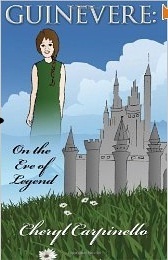 I first became interested in Cheryl Carpinello’s work when I began research on my own Arthurian-themed adventure novel for middle graders, The Search for the Stone of Excalibur. At the time, I read and reviewed the delightful
Guinevere: On the Eve of a Legend
. Read my review
here
. Cheryl’s book was a Finalist Pre-Teen Literature: Dan Poynter's 2011 Global Ebook Awards.
I first became interested in Cheryl Carpinello’s work when I began research on my own Arthurian-themed adventure novel for middle graders, The Search for the Stone of Excalibur. At the time, I read and reviewed the delightful
Guinevere: On the Eve of a Legend
. Read my review
here
. Cheryl’s book was a Finalist Pre-Teen Literature: Dan Poynter's 2011 Global Ebook Awards. Cheryl says this about her fascination with all things Arthurian: “Although a retired teacher, I still have a passion for working with kids. I regularly conduct Medieval Writing Workshops for local elementary/middle schools and the Colorado Girl Scouts. It seems I'm not the only one who loves Medieval Times and the King Arthur Legend. The kids thoroughly enjoy writing their own medieval stories complete with dragons, wizards, unicorns, and knights!”
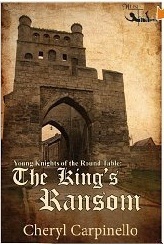 Next came
The King’s Ransom
(Book I of The Young Knights of the Round Table), a tween adventure novella. At Pembroke Castle in medieval Wales,11-year-old Prince Gavin, 13-year-old orphan Philip, and 15-year-old blacksmith's apprentice Bryan, brought together in friendship by the one they call The Wild Man, embark upon a quest to save The Wild Man’s life when he is accused of murder and robbery. If they have any hope of succeeding, the three will have to confront their fears and insecurities, and one of them will have to disclose the biggest secret of all. But it is the arrival of King Arthur and what he reveals that surprises characters and readers.
Next came
The King’s Ransom
(Book I of The Young Knights of the Round Table), a tween adventure novella. At Pembroke Castle in medieval Wales,11-year-old Prince Gavin, 13-year-old orphan Philip, and 15-year-old blacksmith's apprentice Bryan, brought together in friendship by the one they call The Wild Man, embark upon a quest to save The Wild Man’s life when he is accused of murder and robbery. If they have any hope of succeeding, the three will have to confront their fears and insecurities, and one of them will have to disclose the biggest secret of all. But it is the arrival of King Arthur and what he reveals that surprises characters and readers.But wait, there’s more!
Hot on the heels of the book came a fascinating behind-the-scenes in Behind the Scenes of The King’s Ransom.
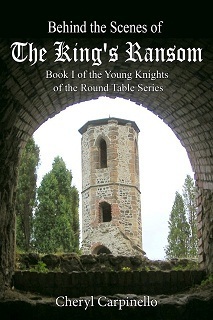
Have you ever wondered what writers do in addition to writing their books?
Behind the Scenes of The King’s Ransom lets readers meet the characters in The King’s Ransom (Young Knights of the Round Table), go on a virtual tour of the actual Welsh settings and sample Welsh food and drink, discover the secrets of the author, and other goodies. Read excerpts from The King's Ransom and Guinevere: On the Eve of Legend.
Sounds fascinating!
GET YOUR FREE COPY ON 20 AND 21 September!
(Originally priced at $3.50)
Take a look at Chery and her work here!
Published on September 20, 2012 09:28
September 13, 2012
Transformational Fiction with Lisa Hilleren
Today’s book review post features author Lisa Hilleren and her hilarious transformational novel Reconstructing Eve. Lisa is generously giving away a 30% discount on e-book and paperback purchases. Scroll to the bottom of this interview for details.
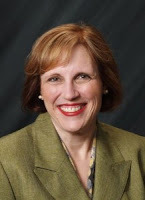 Author Lisa Hilleren Does life imitate art or vice-versa? Either way, the apple didn’t fall far from the tree. Like her fictional character Eve, Lisa Hilleren lives in the Garden State and drives a red convertible. Her personal journey of self-discovery began 15 years ago, when she learned the power of emotional intelligence, which she has since taught to countless others in her role as a professional trainer.
Author Lisa Hilleren Does life imitate art or vice-versa? Either way, the apple didn’t fall far from the tree. Like her fictional character Eve, Lisa Hilleren lives in the Garden State and drives a red convertible. Her personal journey of self-discovery began 15 years ago, when she learned the power of emotional intelligence, which she has since taught to countless others in her role as a professional trainer.
Let’s talk about Reconstructing Eve.
When Aidan Wharton asks Eve Merritt on a date, one might wonder why she refuses to go. After all, Aidan, a handsome, rich, well connected, 31 y/o, is most women’s dream date. That is, if you’re a supermodel look-alike, not a 44 y/o divorcée, with a grown-up daughter, and (even worse) jiggly thighs. To make matters more complicated, Eve used to babysit Aidan when he was little, and their parents know each other. However, temptation is hard to resist. Eve, who has been a good daughter, wife, and mother all her life, suddenly decides to kick over the traces and just take a bite of the apple. What she doesn’t expect is Aidan’s total adoration and commitment; her ex-husband’s bid to renew their relationship; a stalker from Aidan’s past creating trouble; and finally a crazed killer who seems to out to get both of them. Could things be any more complicated? Yes, when Eve finds herself falling hard for Aidan and tries to talk herself out of something that (of course!) can never work long term, especially not the happy-ever-after future complete with big wedding that Aidan has in mind. Has Eve got the courage to overcome the decades of old conditioning and for once put her own happiness and well-being first?
Q: In your own words, what is ‘transformational fiction?’ I’ve heard of inspirational fiction, but this is a new concept.
A: Thank you so much for asking this question! One of the reasons I chose to self-publish is that my novels don’t fit in any one of the established commercial fiction genres. Although there are strong romantic, comedy, and suspense elements in Reconstructing Eve, at its heart, it’s the story of a woman’s journey of self-discovery.
 Princess Fiona rules! And that’s what transformational fiction is. Avatar, Shrek, and The Mask of Zorro are great examples of male protagonists transforming into their authentic selves. My novels center on women learning how to cast off the gender and generational conditioning that have inhibited them from leading truly fulfilled lives. Conflict abounds from both internal and external resistance to the heroine’s personal development, but at no point in any of my books does the heroine abandon her responsibilities in order to go find herself. Instead, as part of her transformation, she redefines the concept of what constitutes being a good wife, mom, and daughter, and by doing so, she ultimately comes to the realization that she can have it all. Hence the tag line, “Have your apple and your Eden, too!”
Princess Fiona rules! And that’s what transformational fiction is. Avatar, Shrek, and The Mask of Zorro are great examples of male protagonists transforming into their authentic selves. My novels center on women learning how to cast off the gender and generational conditioning that have inhibited them from leading truly fulfilled lives. Conflict abounds from both internal and external resistance to the heroine’s personal development, but at no point in any of my books does the heroine abandon her responsibilities in order to go find herself. Instead, as part of her transformation, she redefines the concept of what constitutes being a good wife, mom, and daughter, and by doing so, she ultimately comes to the realization that she can have it all. Hence the tag line, “Have your apple and your Eden, too!”
Q: What prompted you to take an inner journey, which you describe on your website, and turn it into something so hilarious and real that the reader can’t help laughing, nodding in acknowledgement, and saying, “Yep. I know exactly what she’s talking about!” (You could have written a serious non-fiction book with lots of reader exercises at the back – the kind we tend to buy and never read…).
A: Like countless other women, I grew up believing (thanks to fairy tales and television ads) that I should dedicate my life to taking care of everyone else’s needs. It’s not that anyone ever said as much, but when you are constantly barraged by images of women behaving in that manner--especially from a very young, impressionable age--you associate those actions (and through that association, form the belief) that that’s the ‘right and natural order of things.’
The carrot, as I saw it, for being sweet and selfless like Cinderella, was that I’d get to live happily-ever-after. So at 20, I married a prince of a guy, and by my 25th birthday I was mom to two beautiful children. Having been very poor growing up, I was determined give my children the material things I’d always longed for, and so, by my 30s, I was pulling down a handsome salary as a call center manager for a global insurance company. By society’s standards, I had it all: marriage, children, a career, a nice house, nice cars, etc. When I stepped back from my life and viewed it as a photograph, it screamed success!
But I didn’t feel successful. I felt restless. I felt that something was missing, and how could that be? I’d done everything right. I should have felt so fulfilled, should have been living--and reveling in--my richly deserved happily-ever-after. But no, the happiness I expected would be handed over to me (you know, in a ceremony rivaling that of the queen’s coronation) never happened. Leading me to the very unhappy realization that being self-sacrificing didn’t guarantee my own happiness as I’d falsely believed.
 Bite that apple of life!I was livid. I felt like I’d been suckered into the world’s biggest bait and switch. I demanded answers, which is what led to me to my inner journey and the discovery that happiness is a state of being, not a reward. Acknowledging that I was wrong in my thinking (and--gasp!--that I wasn’t perfect!) was so challenging for me. How I coped with it and kept myself moving forward was by focusing on the humor in my circumstances. That said, I initially wrote Reconstructing Eve for myself. Although Eve’s journey differs from mine, her emotions mirror mine and as difficult as it was to write about them, it was also tremendously cathartic. Too, being a storyteller, I still love fairy tales, and I wanted to honor that by writing one where the heroine is victorious because she has the courage to be herself, not because she’s being sweet and self-sacrificing.
Bite that apple of life!I was livid. I felt like I’d been suckered into the world’s biggest bait and switch. I demanded answers, which is what led to me to my inner journey and the discovery that happiness is a state of being, not a reward. Acknowledging that I was wrong in my thinking (and--gasp!--that I wasn’t perfect!) was so challenging for me. How I coped with it and kept myself moving forward was by focusing on the humor in my circumstances. That said, I initially wrote Reconstructing Eve for myself. Although Eve’s journey differs from mine, her emotions mirror mine and as difficult as it was to write about them, it was also tremendously cathartic. Too, being a storyteller, I still love fairy tales, and I wanted to honor that by writing one where the heroine is victorious because she has the courage to be herself, not because she’s being sweet and self-sacrificing.
Q: Do you think readers will better absorb the message in a wickedly funny and realistic package than if they pick up a book that outlines what they didn’t do/should be doing with their lives?
A: It’s been well-documented that our choices are emotionally-driven. That said, non-fiction can evoke certain emotions. For example, we can be inspired by the author’s journey, or conversely, intimidated by her credentials. We can be uplifted by the possibilities presented in a self-help book, or, as typically happens with adults, get stymied by our fear of failure. What’s different about novels is that the audience gets to "safely" experience the full range of emotions that the protagonist experiences in her journey of self-discovery: her hopes, her fears, her joys, her sorrows. The reader might fear for the heroine’s well-being, but on a subconscious level, she’s aware that her own well-being is not in jeopardy. Fiction creates an environment where the reader is comfortable lowering her emotional guard, and in doing so, vicariously lives the protagonist’s journey.
If what the heroine says or does strikes a deep emotional chord, chances are that the reader will respond with receptivity to the message as well as take into consideration the options presented to her for potentially leading a more fulfilled life.
Q: You’ve written other, still unpublished works (historical, paranormal and contemp. romance). What made you take the plunge and see Reconstructing Eve published?
A: I wrote the other books before and during my self-discovery journey. Although well-crafted, they didn’t sell, partly because like Reconstructing Eve, they didn’t neatly fit into a traditional genre. I believe the bigger reason, though, was that I was writing from my ego, not from my heart. The best advice I ever received as a writer was, “Write to express, not to impress.”
After years of receiving countless “good” rejections, I stopped writing and focused on my personal development. Reconstructing Eve is the result of me writing from my heart and from believing so passionately in Eve’s story that I chose to self-publish when once again, the “good” rejections poured in. As Aidan tells Eve, “You’ve got to put yourself out there.” (LOL, I’m laughing here because yes, I often take advice from my own fictional characters.)
Q: Eve is the original temptress, and she did go off the path a bit long long ago. In the book, are you giving readers a hint that it’s possible to, well, not turn back the clock, but start the path all over again? (and get it right)
A: My hope is that women continue to band together in rejecting the notion that by pursuing our own happiness we are somehow straying off the “straight and narrow path." Self-fulfillment is not selfish. Similarly, enjoying a healthy sex life does not make us immoral. Reconstructing Eve is about recognizing and addressing the dysfunctional aspects of conforming to the status quo. I deliberately had Eve give in to temptation as a way of showing how--once we stop letting the social norms dictate whether we are “bad” or “good” (and ergo, worthy and deserving of happiness)--we create the opportunity to truly have it all.
Q: Many women shy away at the idea of taking on a younger partner, who could easily have a young gorgeous woman in his life (sans jiggly thighs). What do you think is the reason so many younger men DO, in fact, gravitate to an older woman, and can this relationship work? (You can hear I am as much a Doubting Thomas as Eve is!)
A: LOL, I was too! Until I researched why younger men are attracted to older women. The top responses were:
1) Maturity
2) Their life experiences creates the opportunity for great conversation and camaraderie
3) They’re upfront about what they want
4) They aren’t looking to be endlessly entertained or forever on the go
5) They are interested in having a relationship, not just looking for a baby-daddy
6) They don't thrive on unnecessary drama; Instead, they tend to approach life's hiccups with a sense of humor, and for the most part, choose to overcome their challenges rather than incessantly dwell on them
In the articles I read, many of the May-December relationships outlasted those where the partners were of a similar age. And for those that didn’t, the men stated how much they valued the experience and continued to hold their former partner in the highest respect and regard.
Q: You do not have to answer this one (ha ha question) - is Aidan Wharton your husband in disguise?
A: He definitely challenges me the way Aidan challenges Eve! He’s more “alpha” than Aidan, though. I'd say he’s one-part Aidan and two-parts Will Merritt - which makes for a very lucky me!!!
Q: The secret question that no one has ever asked...do you have a garden like Eve’s?
A: Don’t I wish! My mother had a magnificent garden, though, and my vivid memories of it are what I visualized when I wrote the book. Me, I’m a brown thumb through and through! It’s only because my husband looks after my four rose bushes and two lilac plants that they have somehow managed to thrive.
My review:
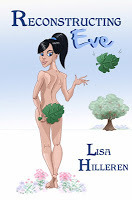 This is more than just a fun, chick-lit read. Lisa Helleren taps straight into most women’s anxieties and insecurities when faced with a new relationship after the end of a long marriage. In many cases, women struggle to reinvent themselves after their former role of dutiful wife and mother has ended and it appears that they failed in their task. The dialogue is real and snappy, and the author takes readers right into Eve’s head. There is an underlying message that gives women hope, and the author herself says, “Supporting women on their journeys of self-discovery is my passion; it's the driving force behind my writing.” Eve learns her life lessons, and finally cultivates self-belief through love, regardless of jiggly thighs. The characters interact in a most credible way, making them believable and ultimately appealing. The author has a deft touch when it comes to characterization and there are no one-dimensional actors in this theater of life. Readers will laugh, and empathize. There’s passion, humor, tenderness, sadness, and ultimately self-discovery and redemption. There are a few adult love scenes but they flow seamlessly into this excellent story. Highly recommended.
This is more than just a fun, chick-lit read. Lisa Helleren taps straight into most women’s anxieties and insecurities when faced with a new relationship after the end of a long marriage. In many cases, women struggle to reinvent themselves after their former role of dutiful wife and mother has ended and it appears that they failed in their task. The dialogue is real and snappy, and the author takes readers right into Eve’s head. There is an underlying message that gives women hope, and the author herself says, “Supporting women on their journeys of self-discovery is my passion; it's the driving force behind my writing.” Eve learns her life lessons, and finally cultivates self-belief through love, regardless of jiggly thighs. The characters interact in a most credible way, making them believable and ultimately appealing. The author has a deft touch when it comes to characterization and there are no one-dimensional actors in this theater of life. Readers will laugh, and empathize. There’s passion, humor, tenderness, sadness, and ultimately self-discovery and redemption. There are a few adult love scenes but they flow seamlessly into this excellent story. Highly recommended.
Please visit Lisa’s excellent site, where her mission is to empower women through self discovery and celebrate the right values for them. In Lisa’s own words: “As I was writing Reconstructing Eve, I was privileged to have the most amazing conversations with other women about our journeys of self-discovery. This sharing of knowledge and insights inspired me to create an on-line community for women to connect and support one another.”
Be it through training or fiction writing, Lisa is passionate about sharing the knowledge and tools that help women to discover and embrace their authentic selves. Lisa has some excellent articles on her site. Read them. You’re in there somewhere.
Get your 30% discount off a Smashwords purchase using this code VL52H.Get your 30% discount off a paperback purchase on CreateSpace by adding the book to your cart and on the checkout page, enter discount code BRQHNBWF.

 Author Lisa Hilleren Does life imitate art or vice-versa? Either way, the apple didn’t fall far from the tree. Like her fictional character Eve, Lisa Hilleren lives in the Garden State and drives a red convertible. Her personal journey of self-discovery began 15 years ago, when she learned the power of emotional intelligence, which she has since taught to countless others in her role as a professional trainer.
Author Lisa Hilleren Does life imitate art or vice-versa? Either way, the apple didn’t fall far from the tree. Like her fictional character Eve, Lisa Hilleren lives in the Garden State and drives a red convertible. Her personal journey of self-discovery began 15 years ago, when she learned the power of emotional intelligence, which she has since taught to countless others in her role as a professional trainer. Let’s talk about Reconstructing Eve.
When Aidan Wharton asks Eve Merritt on a date, one might wonder why she refuses to go. After all, Aidan, a handsome, rich, well connected, 31 y/o, is most women’s dream date. That is, if you’re a supermodel look-alike, not a 44 y/o divorcée, with a grown-up daughter, and (even worse) jiggly thighs. To make matters more complicated, Eve used to babysit Aidan when he was little, and their parents know each other. However, temptation is hard to resist. Eve, who has been a good daughter, wife, and mother all her life, suddenly decides to kick over the traces and just take a bite of the apple. What she doesn’t expect is Aidan’s total adoration and commitment; her ex-husband’s bid to renew their relationship; a stalker from Aidan’s past creating trouble; and finally a crazed killer who seems to out to get both of them. Could things be any more complicated? Yes, when Eve finds herself falling hard for Aidan and tries to talk herself out of something that (of course!) can never work long term, especially not the happy-ever-after future complete with big wedding that Aidan has in mind. Has Eve got the courage to overcome the decades of old conditioning and for once put her own happiness and well-being first?
Q: In your own words, what is ‘transformational fiction?’ I’ve heard of inspirational fiction, but this is a new concept.
A: Thank you so much for asking this question! One of the reasons I chose to self-publish is that my novels don’t fit in any one of the established commercial fiction genres. Although there are strong romantic, comedy, and suspense elements in Reconstructing Eve, at its heart, it’s the story of a woman’s journey of self-discovery.
 Princess Fiona rules! And that’s what transformational fiction is. Avatar, Shrek, and The Mask of Zorro are great examples of male protagonists transforming into their authentic selves. My novels center on women learning how to cast off the gender and generational conditioning that have inhibited them from leading truly fulfilled lives. Conflict abounds from both internal and external resistance to the heroine’s personal development, but at no point in any of my books does the heroine abandon her responsibilities in order to go find herself. Instead, as part of her transformation, she redefines the concept of what constitutes being a good wife, mom, and daughter, and by doing so, she ultimately comes to the realization that she can have it all. Hence the tag line, “Have your apple and your Eden, too!”
Princess Fiona rules! And that’s what transformational fiction is. Avatar, Shrek, and The Mask of Zorro are great examples of male protagonists transforming into their authentic selves. My novels center on women learning how to cast off the gender and generational conditioning that have inhibited them from leading truly fulfilled lives. Conflict abounds from both internal and external resistance to the heroine’s personal development, but at no point in any of my books does the heroine abandon her responsibilities in order to go find herself. Instead, as part of her transformation, she redefines the concept of what constitutes being a good wife, mom, and daughter, and by doing so, she ultimately comes to the realization that she can have it all. Hence the tag line, “Have your apple and your Eden, too!” Q: What prompted you to take an inner journey, which you describe on your website, and turn it into something so hilarious and real that the reader can’t help laughing, nodding in acknowledgement, and saying, “Yep. I know exactly what she’s talking about!” (You could have written a serious non-fiction book with lots of reader exercises at the back – the kind we tend to buy and never read…).
A: Like countless other women, I grew up believing (thanks to fairy tales and television ads) that I should dedicate my life to taking care of everyone else’s needs. It’s not that anyone ever said as much, but when you are constantly barraged by images of women behaving in that manner--especially from a very young, impressionable age--you associate those actions (and through that association, form the belief) that that’s the ‘right and natural order of things.’
The carrot, as I saw it, for being sweet and selfless like Cinderella, was that I’d get to live happily-ever-after. So at 20, I married a prince of a guy, and by my 25th birthday I was mom to two beautiful children. Having been very poor growing up, I was determined give my children the material things I’d always longed for, and so, by my 30s, I was pulling down a handsome salary as a call center manager for a global insurance company. By society’s standards, I had it all: marriage, children, a career, a nice house, nice cars, etc. When I stepped back from my life and viewed it as a photograph, it screamed success!
But I didn’t feel successful. I felt restless. I felt that something was missing, and how could that be? I’d done everything right. I should have felt so fulfilled, should have been living--and reveling in--my richly deserved happily-ever-after. But no, the happiness I expected would be handed over to me (you know, in a ceremony rivaling that of the queen’s coronation) never happened. Leading me to the very unhappy realization that being self-sacrificing didn’t guarantee my own happiness as I’d falsely believed.
 Bite that apple of life!I was livid. I felt like I’d been suckered into the world’s biggest bait and switch. I demanded answers, which is what led to me to my inner journey and the discovery that happiness is a state of being, not a reward. Acknowledging that I was wrong in my thinking (and--gasp!--that I wasn’t perfect!) was so challenging for me. How I coped with it and kept myself moving forward was by focusing on the humor in my circumstances. That said, I initially wrote Reconstructing Eve for myself. Although Eve’s journey differs from mine, her emotions mirror mine and as difficult as it was to write about them, it was also tremendously cathartic. Too, being a storyteller, I still love fairy tales, and I wanted to honor that by writing one where the heroine is victorious because she has the courage to be herself, not because she’s being sweet and self-sacrificing.
Bite that apple of life!I was livid. I felt like I’d been suckered into the world’s biggest bait and switch. I demanded answers, which is what led to me to my inner journey and the discovery that happiness is a state of being, not a reward. Acknowledging that I was wrong in my thinking (and--gasp!--that I wasn’t perfect!) was so challenging for me. How I coped with it and kept myself moving forward was by focusing on the humor in my circumstances. That said, I initially wrote Reconstructing Eve for myself. Although Eve’s journey differs from mine, her emotions mirror mine and as difficult as it was to write about them, it was also tremendously cathartic. Too, being a storyteller, I still love fairy tales, and I wanted to honor that by writing one where the heroine is victorious because she has the courage to be herself, not because she’s being sweet and self-sacrificing. Q: Do you think readers will better absorb the message in a wickedly funny and realistic package than if they pick up a book that outlines what they didn’t do/should be doing with their lives?
A: It’s been well-documented that our choices are emotionally-driven. That said, non-fiction can evoke certain emotions. For example, we can be inspired by the author’s journey, or conversely, intimidated by her credentials. We can be uplifted by the possibilities presented in a self-help book, or, as typically happens with adults, get stymied by our fear of failure. What’s different about novels is that the audience gets to "safely" experience the full range of emotions that the protagonist experiences in her journey of self-discovery: her hopes, her fears, her joys, her sorrows. The reader might fear for the heroine’s well-being, but on a subconscious level, she’s aware that her own well-being is not in jeopardy. Fiction creates an environment where the reader is comfortable lowering her emotional guard, and in doing so, vicariously lives the protagonist’s journey.
If what the heroine says or does strikes a deep emotional chord, chances are that the reader will respond with receptivity to the message as well as take into consideration the options presented to her for potentially leading a more fulfilled life.
Q: You’ve written other, still unpublished works (historical, paranormal and contemp. romance). What made you take the plunge and see Reconstructing Eve published?
A: I wrote the other books before and during my self-discovery journey. Although well-crafted, they didn’t sell, partly because like Reconstructing Eve, they didn’t neatly fit into a traditional genre. I believe the bigger reason, though, was that I was writing from my ego, not from my heart. The best advice I ever received as a writer was, “Write to express, not to impress.”
After years of receiving countless “good” rejections, I stopped writing and focused on my personal development. Reconstructing Eve is the result of me writing from my heart and from believing so passionately in Eve’s story that I chose to self-publish when once again, the “good” rejections poured in. As Aidan tells Eve, “You’ve got to put yourself out there.” (LOL, I’m laughing here because yes, I often take advice from my own fictional characters.)
Q: Eve is the original temptress, and she did go off the path a bit long long ago. In the book, are you giving readers a hint that it’s possible to, well, not turn back the clock, but start the path all over again? (and get it right)
A: My hope is that women continue to band together in rejecting the notion that by pursuing our own happiness we are somehow straying off the “straight and narrow path." Self-fulfillment is not selfish. Similarly, enjoying a healthy sex life does not make us immoral. Reconstructing Eve is about recognizing and addressing the dysfunctional aspects of conforming to the status quo. I deliberately had Eve give in to temptation as a way of showing how--once we stop letting the social norms dictate whether we are “bad” or “good” (and ergo, worthy and deserving of happiness)--we create the opportunity to truly have it all.
Q: Many women shy away at the idea of taking on a younger partner, who could easily have a young gorgeous woman in his life (sans jiggly thighs). What do you think is the reason so many younger men DO, in fact, gravitate to an older woman, and can this relationship work? (You can hear I am as much a Doubting Thomas as Eve is!)
A: LOL, I was too! Until I researched why younger men are attracted to older women. The top responses were:
1) Maturity
2) Their life experiences creates the opportunity for great conversation and camaraderie
3) They’re upfront about what they want
4) They aren’t looking to be endlessly entertained or forever on the go
5) They are interested in having a relationship, not just looking for a baby-daddy
6) They don't thrive on unnecessary drama; Instead, they tend to approach life's hiccups with a sense of humor, and for the most part, choose to overcome their challenges rather than incessantly dwell on them
In the articles I read, many of the May-December relationships outlasted those where the partners were of a similar age. And for those that didn’t, the men stated how much they valued the experience and continued to hold their former partner in the highest respect and regard.
Q: You do not have to answer this one (ha ha question) - is Aidan Wharton your husband in disguise?
A: He definitely challenges me the way Aidan challenges Eve! He’s more “alpha” than Aidan, though. I'd say he’s one-part Aidan and two-parts Will Merritt - which makes for a very lucky me!!!
Q: The secret question that no one has ever asked...do you have a garden like Eve’s?
A: Don’t I wish! My mother had a magnificent garden, though, and my vivid memories of it are what I visualized when I wrote the book. Me, I’m a brown thumb through and through! It’s only because my husband looks after my four rose bushes and two lilac plants that they have somehow managed to thrive.
My review:
 This is more than just a fun, chick-lit read. Lisa Helleren taps straight into most women’s anxieties and insecurities when faced with a new relationship after the end of a long marriage. In many cases, women struggle to reinvent themselves after their former role of dutiful wife and mother has ended and it appears that they failed in their task. The dialogue is real and snappy, and the author takes readers right into Eve’s head. There is an underlying message that gives women hope, and the author herself says, “Supporting women on their journeys of self-discovery is my passion; it's the driving force behind my writing.” Eve learns her life lessons, and finally cultivates self-belief through love, regardless of jiggly thighs. The characters interact in a most credible way, making them believable and ultimately appealing. The author has a deft touch when it comes to characterization and there are no one-dimensional actors in this theater of life. Readers will laugh, and empathize. There’s passion, humor, tenderness, sadness, and ultimately self-discovery and redemption. There are a few adult love scenes but they flow seamlessly into this excellent story. Highly recommended.
This is more than just a fun, chick-lit read. Lisa Helleren taps straight into most women’s anxieties and insecurities when faced with a new relationship after the end of a long marriage. In many cases, women struggle to reinvent themselves after their former role of dutiful wife and mother has ended and it appears that they failed in their task. The dialogue is real and snappy, and the author takes readers right into Eve’s head. There is an underlying message that gives women hope, and the author herself says, “Supporting women on their journeys of self-discovery is my passion; it's the driving force behind my writing.” Eve learns her life lessons, and finally cultivates self-belief through love, regardless of jiggly thighs. The characters interact in a most credible way, making them believable and ultimately appealing. The author has a deft touch when it comes to characterization and there are no one-dimensional actors in this theater of life. Readers will laugh, and empathize. There’s passion, humor, tenderness, sadness, and ultimately self-discovery and redemption. There are a few adult love scenes but they flow seamlessly into this excellent story. Highly recommended.Please visit Lisa’s excellent site, where her mission is to empower women through self discovery and celebrate the right values for them. In Lisa’s own words: “As I was writing Reconstructing Eve, I was privileged to have the most amazing conversations with other women about our journeys of self-discovery. This sharing of knowledge and insights inspired me to create an on-line community for women to connect and support one another.”
Be it through training or fiction writing, Lisa is passionate about sharing the knowledge and tools that help women to discover and embrace their authentic selves. Lisa has some excellent articles on her site. Read them. You’re in there somewhere.
Get your 30% discount off a Smashwords purchase using this code VL52H.Get your 30% discount off a paperback purchase on CreateSpace by adding the book to your cart and on the checkout page, enter discount code BRQHNBWF.
Published on September 13, 2012 08:10
September 4, 2012
The Great Amazon Book Review Scam
Every author knows that book reviews are important. Why? Simple. Reviews guide the readers (your potential buyers) in the right direction. It helps to have rave 5-star reviews; it hurts to get dismal 1-star reviews. Most authors dream of having hundreds, nay thousands of reviews, like some of the top authors out there.
The NY Times says: “Reviews by ordinary people have become an essential mechanism for selling almost anything online; they are used for resorts, dermatologists, neighborhood restaurants, high-fashion boutiques, churches, parks, astrologers and healers—not to mention products like garbage pails, tweezers, spa slippers and cases for tablet computers. In many situations, these reviews are supplanting the marketing department, the press agent, advertisements, word of mouth and the professional critique.”
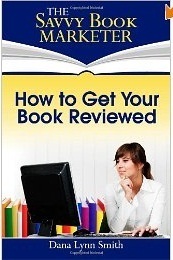 But getting reviews is hard work, even when there are helpful guides, such as Dana Lynn Smith’s resource page which, among other useful ‘how to’ publications, actually has a book called How to Get Your Book Reviewed. (It’s brilliant!)
But getting reviews is hard work, even when there are helpful guides, such as Dana Lynn Smith’s resource page which, among other useful ‘how to’ publications, actually has a book called How to Get Your Book Reviewed. (It’s brilliant!)
Aha, but therein lies the rub. The ‘hard work’ part. The author has to hunt down people (friends, relatives, colleagues, bloggers, and perfect strangers) and persuade them to read and review the book, giving up their time for no reward. You, the author, get the reward because ultimately their opinion will maybe persuade a (huge!) number of people to purchase your book/s.
Isn’t it soooooo much easier to cut to the chase, eliminate the middle man (reviewers), and write them yourself?
Brilliant idea! And at the same time you’re elevating your own work to the stars, you can trash the opposition, or anyone who might possibly sell more books than you.
Enter the Great Amazon Book Review Scam
This ugly phenomenon first reared its head in a 2010 article in The Guardian revealing how historian Orlando Figes praised his own work and denounced that of his rivals by using fake Amazon accounts to post reviews. He first denied it; even suggesting his wife had done this without his knowledge, and then finally crumbled and confessed, citing ‘intense pressure’ as the reason. Hmmm. One wonders. But then, academics live in the rarified atmosphere of academia and they are fond of saying, “Publish or perish,” so maybe he did just go temporarily off the rails.
However, the lurgy struck again, this time in the world of fiction writing. In August 2012, the NY Times reported a book review scam—masses of paid Amazon reviews.
“Suddenly reviews, of anything in fact, have become vitally important. … But not just any kind of review will do. They have to be somewhere between enthusiastic and ecstatic.”
A site called GettingBookReviews.com (now defunct) created 4531 reviews, mainly for self-published authors, historically the desperadoes of the publishing world and possibly capable (Ha! Ha!) of the lowest of tricks to get positive reviews. Owner Todd Jason Rutherford could not keep up with the demand, so he created a mini industry of reviewers who churned out the reviews. Even John Locke admits (unblushingly) to using his services. The axe fell when an unhappy client criticized the site and demanded a refund. Google cancelled Rutherford’s advertising services and Amazon removed many of his reviews.
Still, ‘real’ (traditionally published) authors seemed to be above all these tacky tactics.
 But wait! There’s more! In late August 2012, an article appeared in Forbes alerting readers to another shocking development in the fake review department: at the Theakston Old Peculier Crime Writing Festival, successful author Stephen Leather confessed, during an on-stage panel discussion, that he used fake accounts to promote his own books. For the uninitiated or the ethically minded, this is called ‘Sock Puppetry’ (with apologies to all sock puppets out there)
But wait! There’s more! In late August 2012, an article appeared in Forbes alerting readers to another shocking development in the fake review department: at the Theakston Old Peculier Crime Writing Festival, successful author Stephen Leather confessed, during an on-stage panel discussion, that he used fake accounts to promote his own books. For the uninitiated or the ethically minded, this is called ‘Sock Puppetry’ (with apologies to all sock puppets out there)
Can it get worse? Yes.
Suw Charman-Anderson reported in an article (3/09/2012) in Forbes that: “Best-selling crime writer RJ Ellory has turned out to be the latest author exposed in the ongoing saga of fake Amazon reviews, a can of worm that just keeps on wriggling. Ellory was the winner of the Theakstons Old Peculier Crime Novel of the Year 2010 for his novel, A Simple Act of Violence.”
So, at the end of this dismal list, what can one derive? That even traditionally published, successful authors who actually have the advantage of a publisher at their back, grinding away at the publicity machine, seem to think it’s okay to lie, it’s okay to cheat the public, treating them like a bunch of ignorant sheep.
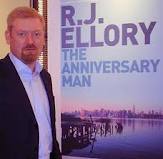 Although Ellory said it was a lapse of judgement in his apology, one wonders how it is possible for anyone to have multiple lapses of judgement. One assumes a lapse of judgement happens when blind rage or intense emotion takes over, and one does something stupid … once … and regrets it thereafter. Somehow, these guilty parties managed to think their way through creating fake Twitter and review profiles; managed to create brilliant reviews for themselves, and also thought up horrible snipes about their rivals—all while in the grip of lapses of judgement.
Although Ellory said it was a lapse of judgement in his apology, one wonders how it is possible for anyone to have multiple lapses of judgement. One assumes a lapse of judgement happens when blind rage or intense emotion takes over, and one does something stupid … once … and regrets it thereafter. Somehow, these guilty parties managed to think their way through creating fake Twitter and review profiles; managed to create brilliant reviews for themselves, and also thought up horrible snipes about their rivals—all while in the grip of lapses of judgement.
Lying is lying. Cheating is cheating.
Let’s talk about cheating.
In February 2012, The Guardian posted a cautionary article entitled Plagiarist Beware: The Internet Will Find You Out.
It did in the case of Kay Manning, who had plagiarised sections of a number of romance books. Her excuse? She thought they were parts of her own work on her computer… Huh?
Clearly, the lesson was not learned. Even worse was a report in the New Yorker about Q.R. Markham (real name Quentin Rowan), the author who pieced together his lauded debut from an amalgamation of spy thrillers. Famous spy thrillers. It was inevitable that someone would notice. In Assassin of Secrets, there were thirty-four instances of plagiarism in the first thirty-five pages. He’d cobbled together his novel from a variety of great novels. Rowan later blamed his publishers for putting him under pressure.
The bottom line is this: in all these cheating, jiggery-pokery, and smoke ‘n’ mirrors tactics, how much time did these authors waste in faking it, time that could have been more usefully employed in actually writing more books?
Although some opinions veer towards blaming Amazon, ask yourself: is Amazon the moral police officer of publishing? Amazon is a big shop front. It’s a gigantic store that sells loads of products. That’s their job.
It’s our job, as humans, to self enforce the rules for living. Thou shalt not cheat/steal/lie/dissemble/pull the wool etc. Everyone knows right from wrong. How much more reprehensible is it when writers, traditionally (like artists, playwrights, and poets) the people who hold a mirror up to society and point out our foibles/faults etc in their wonderful stories, deliberately and on numerous occasions seek to puff themselves up, and obtain praise by fraudulent means. It’s like cheating in an exam or faking your qualifications.
 Although others have thought there will be little or no impact on these authors, it seems that you can fool some of the people some of the time, but not all of the people all of the time. There has been a backlash. Crime writers like authors Ian Rankin, Lee Child, and Val McDermid were among the 49 writers to condemn the “underhand tactics” of colleagues.
Although others have thought there will be little or no impact on these authors, it seems that you can fool some of the people some of the time, but not all of the people all of the time. There has been a backlash. Crime writers like authors Ian Rankin, Lee Child, and Val McDermid were among the 49 writers to condemn the “underhand tactics” of colleagues.
A last word from the CEO of Smashwords, Mark Coker about what makes a book great:
“The most powerful marketing secret is to write a super-fabulous book that markets itself. If a book can’t market itself through the passionate word-of-mouth of readers, the author’s marketing will be less effective. How does an author create a book that markets itself? The secret is to write a book that touches the reader’s soul. The reader must love it, and this holds true for both fiction and non-fiction.
If they feel passion for the book, they’ll leave you a five star review, not a three star review, and they’ll tell all their friends and family to purchase it as well. Reader passion gets you word of mouth and social media buzz, and this drives sales.”
Bring back ethics, morality and good, hard work on creating fantastic books. Then the sales, and the reviews, will come.

The NY Times says: “Reviews by ordinary people have become an essential mechanism for selling almost anything online; they are used for resorts, dermatologists, neighborhood restaurants, high-fashion boutiques, churches, parks, astrologers and healers—not to mention products like garbage pails, tweezers, spa slippers and cases for tablet computers. In many situations, these reviews are supplanting the marketing department, the press agent, advertisements, word of mouth and the professional critique.”
 But getting reviews is hard work, even when there are helpful guides, such as Dana Lynn Smith’s resource page which, among other useful ‘how to’ publications, actually has a book called How to Get Your Book Reviewed. (It’s brilliant!)
But getting reviews is hard work, even when there are helpful guides, such as Dana Lynn Smith’s resource page which, among other useful ‘how to’ publications, actually has a book called How to Get Your Book Reviewed. (It’s brilliant!)Aha, but therein lies the rub. The ‘hard work’ part. The author has to hunt down people (friends, relatives, colleagues, bloggers, and perfect strangers) and persuade them to read and review the book, giving up their time for no reward. You, the author, get the reward because ultimately their opinion will maybe persuade a (huge!) number of people to purchase your book/s.
Isn’t it soooooo much easier to cut to the chase, eliminate the middle man (reviewers), and write them yourself?
Brilliant idea! And at the same time you’re elevating your own work to the stars, you can trash the opposition, or anyone who might possibly sell more books than you.
Enter the Great Amazon Book Review Scam
This ugly phenomenon first reared its head in a 2010 article in The Guardian revealing how historian Orlando Figes praised his own work and denounced that of his rivals by using fake Amazon accounts to post reviews. He first denied it; even suggesting his wife had done this without his knowledge, and then finally crumbled and confessed, citing ‘intense pressure’ as the reason. Hmmm. One wonders. But then, academics live in the rarified atmosphere of academia and they are fond of saying, “Publish or perish,” so maybe he did just go temporarily off the rails.
However, the lurgy struck again, this time in the world of fiction writing. In August 2012, the NY Times reported a book review scam—masses of paid Amazon reviews.
“Suddenly reviews, of anything in fact, have become vitally important. … But not just any kind of review will do. They have to be somewhere between enthusiastic and ecstatic.”
A site called GettingBookReviews.com (now defunct) created 4531 reviews, mainly for self-published authors, historically the desperadoes of the publishing world and possibly capable (Ha! Ha!) of the lowest of tricks to get positive reviews. Owner Todd Jason Rutherford could not keep up with the demand, so he created a mini industry of reviewers who churned out the reviews. Even John Locke admits (unblushingly) to using his services. The axe fell when an unhappy client criticized the site and demanded a refund. Google cancelled Rutherford’s advertising services and Amazon removed many of his reviews.
Still, ‘real’ (traditionally published) authors seemed to be above all these tacky tactics.
 But wait! There’s more! In late August 2012, an article appeared in Forbes alerting readers to another shocking development in the fake review department: at the Theakston Old Peculier Crime Writing Festival, successful author Stephen Leather confessed, during an on-stage panel discussion, that he used fake accounts to promote his own books. For the uninitiated or the ethically minded, this is called ‘Sock Puppetry’ (with apologies to all sock puppets out there)
But wait! There’s more! In late August 2012, an article appeared in Forbes alerting readers to another shocking development in the fake review department: at the Theakston Old Peculier Crime Writing Festival, successful author Stephen Leather confessed, during an on-stage panel discussion, that he used fake accounts to promote his own books. For the uninitiated or the ethically minded, this is called ‘Sock Puppetry’ (with apologies to all sock puppets out there)Can it get worse? Yes.
Suw Charman-Anderson reported in an article (3/09/2012) in Forbes that: “Best-selling crime writer RJ Ellory has turned out to be the latest author exposed in the ongoing saga of fake Amazon reviews, a can of worm that just keeps on wriggling. Ellory was the winner of the Theakstons Old Peculier Crime Novel of the Year 2010 for his novel, A Simple Act of Violence.”
So, at the end of this dismal list, what can one derive? That even traditionally published, successful authors who actually have the advantage of a publisher at their back, grinding away at the publicity machine, seem to think it’s okay to lie, it’s okay to cheat the public, treating them like a bunch of ignorant sheep.
 Although Ellory said it was a lapse of judgement in his apology, one wonders how it is possible for anyone to have multiple lapses of judgement. One assumes a lapse of judgement happens when blind rage or intense emotion takes over, and one does something stupid … once … and regrets it thereafter. Somehow, these guilty parties managed to think their way through creating fake Twitter and review profiles; managed to create brilliant reviews for themselves, and also thought up horrible snipes about their rivals—all while in the grip of lapses of judgement.
Although Ellory said it was a lapse of judgement in his apology, one wonders how it is possible for anyone to have multiple lapses of judgement. One assumes a lapse of judgement happens when blind rage or intense emotion takes over, and one does something stupid … once … and regrets it thereafter. Somehow, these guilty parties managed to think their way through creating fake Twitter and review profiles; managed to create brilliant reviews for themselves, and also thought up horrible snipes about their rivals—all while in the grip of lapses of judgement.Lying is lying. Cheating is cheating.
Let’s talk about cheating.
In February 2012, The Guardian posted a cautionary article entitled Plagiarist Beware: The Internet Will Find You Out.
It did in the case of Kay Manning, who had plagiarised sections of a number of romance books. Her excuse? She thought they were parts of her own work on her computer… Huh?
Clearly, the lesson was not learned. Even worse was a report in the New Yorker about Q.R. Markham (real name Quentin Rowan), the author who pieced together his lauded debut from an amalgamation of spy thrillers. Famous spy thrillers. It was inevitable that someone would notice. In Assassin of Secrets, there were thirty-four instances of plagiarism in the first thirty-five pages. He’d cobbled together his novel from a variety of great novels. Rowan later blamed his publishers for putting him under pressure.
The bottom line is this: in all these cheating, jiggery-pokery, and smoke ‘n’ mirrors tactics, how much time did these authors waste in faking it, time that could have been more usefully employed in actually writing more books?
Although some opinions veer towards blaming Amazon, ask yourself: is Amazon the moral police officer of publishing? Amazon is a big shop front. It’s a gigantic store that sells loads of products. That’s their job.
It’s our job, as humans, to self enforce the rules for living. Thou shalt not cheat/steal/lie/dissemble/pull the wool etc. Everyone knows right from wrong. How much more reprehensible is it when writers, traditionally (like artists, playwrights, and poets) the people who hold a mirror up to society and point out our foibles/faults etc in their wonderful stories, deliberately and on numerous occasions seek to puff themselves up, and obtain praise by fraudulent means. It’s like cheating in an exam or faking your qualifications.
 Although others have thought there will be little or no impact on these authors, it seems that you can fool some of the people some of the time, but not all of the people all of the time. There has been a backlash. Crime writers like authors Ian Rankin, Lee Child, and Val McDermid were among the 49 writers to condemn the “underhand tactics” of colleagues.
Although others have thought there will be little or no impact on these authors, it seems that you can fool some of the people some of the time, but not all of the people all of the time. There has been a backlash. Crime writers like authors Ian Rankin, Lee Child, and Val McDermid were among the 49 writers to condemn the “underhand tactics” of colleagues.A last word from the CEO of Smashwords, Mark Coker about what makes a book great:
“The most powerful marketing secret is to write a super-fabulous book that markets itself. If a book can’t market itself through the passionate word-of-mouth of readers, the author’s marketing will be less effective. How does an author create a book that markets itself? The secret is to write a book that touches the reader’s soul. The reader must love it, and this holds true for both fiction and non-fiction.
If they feel passion for the book, they’ll leave you a five star review, not a three star review, and they’ll tell all their friends and family to purchase it as well. Reader passion gets you word of mouth and social media buzz, and this drives sales.”
Bring back ethics, morality and good, hard work on creating fantastic books. Then the sales, and the reviews, will come.
Published on September 04, 2012 05:14
August 20, 2012
Why The Dark Knight Works
SPOILER ALERT: THIS POST CONTAINS SPOILERS
I have now seen all three of The Dark Knight movies. Of those three, I loved the first and the third, and I only watched the second one again because I wanted to refresh my memory before seeing The Dark Knight Rises.
A blog post by Larry Brooks of Storyfix, discussing heroes, inspired my post. There is a plethora of hero-movies now, either Marvel or DC Comics style, which shows that everyone loves a hero. Some heroes have superpowers, some are just super guys. Bruce Wayne, the Dark Knight is one of the latter.
In his post The Secret Weapon of Crafting Effective Heroes, Larry says:
“It’s a double-edged deal: empathy for the situation the hero is in… empathy for the person the hero IS in that situation.”
Why do we like Bruce Wayne so much?
Empathy, that’s why, even though he doesn’t seem very likeable. His persona to the outside world is a playboy billionaire (the kind we all love to hate) who buys hotels and fast cars, and always has adoring women on his arm. He even manages to burn down the family mansion in a bout of drunken birthday party madness. Aha, but that’s not true, is it? We have empathy with Bruce because we know the truth, and we remember that truth when he gets into dangerous situations. We remember why he is who he is, and why he does what he does.
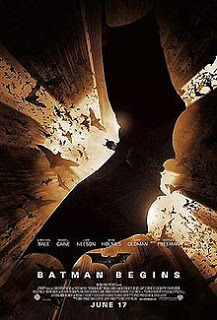 BATMAN BEGINSThe real Bruce Wayne is passionate about truth and justice, a passion ignited by his parents’ death at the hands of a mugger when Bruce was just a little boy. Bruce has always blamed himself for their deaths.
BATMAN BEGINSThe real Bruce Wayne is passionate about truth and justice, a passion ignited by his parents’ death at the hands of a mugger when Bruce was just a little boy. Bruce has always blamed himself for their deaths.
His morbid self-hatred and grief led him—after many travels—to join up with Ra's al Ghul, a man whose twisted sense of ‘cleansing’ society ultimately revolts Bruce. Ra's al Ghul uses various minions from Gotham’s underworld in a plot to destroy Gotham City by vaporizing the water supply into gas laced with the Scarecrow's fear-inducing toxin. He does not succeed, and Bruce saves the day, killing his previous mentor in the process. He emerges on Gotham’s social scene, while cementing his position as a caped crusader, with the help of Sgt. Jim Gordon (superbly played by actor Gary Oldman). All this time Bruce eschews love, even though it’s clear he should be with longtime friend, the assistant DA Rachel Dawes, who cannot bring herself to love both Bruce and Batman.
Larry advises in Booster Shots For Your Search For Story:
“Your bad guy needs a motive, too.”
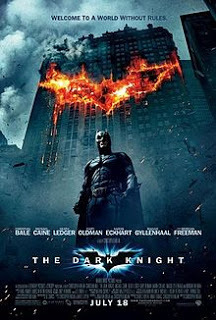 THE DARK KNIGHTThe second film (The Dark Knight) somehow moved away from the threat of Ra's al Ghul’s organization (League of Shadows), supposedly obliterated with his death. A new menace pops up: The Joker played by Heath Ledger. Here my loyalty wavered. In Liam Neeson’s Ra's al Ghul, I found passion and a skewed commitment, but commitment nonetheless, to a cause, however misguided. In the Joker, there are no redeeming qualities. Violence and mayhem, with no discernible motive undermined the strong themes of the first movie. Harvey Dent, a good guy turned bad by circumstances, the DA who ends up dead, brings out another side to Bruce Wayne, showing him as a man who is prepared to shoulder the burdens of others to preserve their good reputation in memory. In the episode leading to Harvey’s death, Bruce injures himself badly. He becomes a recluse, mourning both Harvey and Rachel, also killed by the Joker.
THE DARK KNIGHTThe second film (The Dark Knight) somehow moved away from the threat of Ra's al Ghul’s organization (League of Shadows), supposedly obliterated with his death. A new menace pops up: The Joker played by Heath Ledger. Here my loyalty wavered. In Liam Neeson’s Ra's al Ghul, I found passion and a skewed commitment, but commitment nonetheless, to a cause, however misguided. In the Joker, there are no redeeming qualities. Violence and mayhem, with no discernible motive undermined the strong themes of the first movie. Harvey Dent, a good guy turned bad by circumstances, the DA who ends up dead, brings out another side to Bruce Wayne, showing him as a man who is prepared to shoulder the burdens of others to preserve their good reputation in memory. In the episode leading to Harvey’s death, Bruce injures himself badly. He becomes a recluse, mourning both Harvey and Rachel, also killed by the Joker.
The Dark Knight Rises winds up this excellent series in a brilliant way, for a number of reasons.
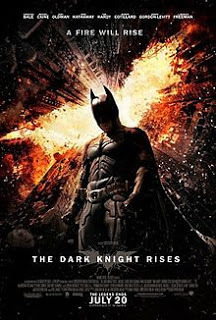 THE DARK KNIGHT RISESBruce Wayne is not a superhero, and has never pretended to be one. He uses technology provided by Fox (the inimitable Morgan Freeman). He doesn't just bounce back into action. He has to get his strength back after a long period of inactivity; he has to endure what his enemy (Tom Hardy as the aptly named Bane) has endured. This tribulation makes him vulnerable, and more real and appealing to us.
THE DARK KNIGHT RISESBruce Wayne is not a superhero, and has never pretended to be one. He uses technology provided by Fox (the inimitable Morgan Freeman). He doesn't just bounce back into action. He has to get his strength back after a long period of inactivity; he has to endure what his enemy (Tom Hardy as the aptly named Bane) has endured. This tribulation makes him vulnerable, and more real and appealing to us.
Bane finally achieves what Ra's al Ghul failed to do. He secures Gotham City and holds its people to ransom using a nuclear device. Although Ra's al Ghul is dead, it seems that his legacy continues with his daughter and Bane. Surprisingly, details show a touching, tender and sympathetic side to the evil killing machine we call Bane. An unrequited love story that has its own back history and one which might be Bane’s saving grace. This element lifts the movie above the level of a kill-fest and gives viewers a deeper understanding of the powerful themes at play.
But back to Bruce… In a fascinating denouement, Bruce’s betrayers are revealed, and he fights back and wins … although seeming to die in the end.
Among other 'discoveries,' Alfred gives a vital clue, which reassures the viewer that the end might not be the end after all. The film also closes the door on the Dark Knight, but opens another one to his legacy, with Robin. (A relief when so many series never know when to call it a day.)
In the last film, we are reassured our hero is not forgotten, and we are given hope that what he stood for—truth and justice—has another champion. There is also the expectation that Bruce finds peace and love, two things ripped from him in such an untimely fashion. This makes him into someone who can appreciate those powerful, although gentle qualities.
This makes him our hero.

I have now seen all three of The Dark Knight movies. Of those three, I loved the first and the third, and I only watched the second one again because I wanted to refresh my memory before seeing The Dark Knight Rises.
A blog post by Larry Brooks of Storyfix, discussing heroes, inspired my post. There is a plethora of hero-movies now, either Marvel or DC Comics style, which shows that everyone loves a hero. Some heroes have superpowers, some are just super guys. Bruce Wayne, the Dark Knight is one of the latter.
In his post The Secret Weapon of Crafting Effective Heroes, Larry says:
“It’s a double-edged deal: empathy for the situation the hero is in… empathy for the person the hero IS in that situation.”
Why do we like Bruce Wayne so much?
Empathy, that’s why, even though he doesn’t seem very likeable. His persona to the outside world is a playboy billionaire (the kind we all love to hate) who buys hotels and fast cars, and always has adoring women on his arm. He even manages to burn down the family mansion in a bout of drunken birthday party madness. Aha, but that’s not true, is it? We have empathy with Bruce because we know the truth, and we remember that truth when he gets into dangerous situations. We remember why he is who he is, and why he does what he does.
 BATMAN BEGINSThe real Bruce Wayne is passionate about truth and justice, a passion ignited by his parents’ death at the hands of a mugger when Bruce was just a little boy. Bruce has always blamed himself for their deaths.
BATMAN BEGINSThe real Bruce Wayne is passionate about truth and justice, a passion ignited by his parents’ death at the hands of a mugger when Bruce was just a little boy. Bruce has always blamed himself for their deaths.His morbid self-hatred and grief led him—after many travels—to join up with Ra's al Ghul, a man whose twisted sense of ‘cleansing’ society ultimately revolts Bruce. Ra's al Ghul uses various minions from Gotham’s underworld in a plot to destroy Gotham City by vaporizing the water supply into gas laced with the Scarecrow's fear-inducing toxin. He does not succeed, and Bruce saves the day, killing his previous mentor in the process. He emerges on Gotham’s social scene, while cementing his position as a caped crusader, with the help of Sgt. Jim Gordon (superbly played by actor Gary Oldman). All this time Bruce eschews love, even though it’s clear he should be with longtime friend, the assistant DA Rachel Dawes, who cannot bring herself to love both Bruce and Batman.
Larry advises in Booster Shots For Your Search For Story:
“Your bad guy needs a motive, too.”
 THE DARK KNIGHTThe second film (The Dark Knight) somehow moved away from the threat of Ra's al Ghul’s organization (League of Shadows), supposedly obliterated with his death. A new menace pops up: The Joker played by Heath Ledger. Here my loyalty wavered. In Liam Neeson’s Ra's al Ghul, I found passion and a skewed commitment, but commitment nonetheless, to a cause, however misguided. In the Joker, there are no redeeming qualities. Violence and mayhem, with no discernible motive undermined the strong themes of the first movie. Harvey Dent, a good guy turned bad by circumstances, the DA who ends up dead, brings out another side to Bruce Wayne, showing him as a man who is prepared to shoulder the burdens of others to preserve their good reputation in memory. In the episode leading to Harvey’s death, Bruce injures himself badly. He becomes a recluse, mourning both Harvey and Rachel, also killed by the Joker.
THE DARK KNIGHTThe second film (The Dark Knight) somehow moved away from the threat of Ra's al Ghul’s organization (League of Shadows), supposedly obliterated with his death. A new menace pops up: The Joker played by Heath Ledger. Here my loyalty wavered. In Liam Neeson’s Ra's al Ghul, I found passion and a skewed commitment, but commitment nonetheless, to a cause, however misguided. In the Joker, there are no redeeming qualities. Violence and mayhem, with no discernible motive undermined the strong themes of the first movie. Harvey Dent, a good guy turned bad by circumstances, the DA who ends up dead, brings out another side to Bruce Wayne, showing him as a man who is prepared to shoulder the burdens of others to preserve their good reputation in memory. In the episode leading to Harvey’s death, Bruce injures himself badly. He becomes a recluse, mourning both Harvey and Rachel, also killed by the Joker. The Dark Knight Rises winds up this excellent series in a brilliant way, for a number of reasons.
 THE DARK KNIGHT RISESBruce Wayne is not a superhero, and has never pretended to be one. He uses technology provided by Fox (the inimitable Morgan Freeman). He doesn't just bounce back into action. He has to get his strength back after a long period of inactivity; he has to endure what his enemy (Tom Hardy as the aptly named Bane) has endured. This tribulation makes him vulnerable, and more real and appealing to us.
THE DARK KNIGHT RISESBruce Wayne is not a superhero, and has never pretended to be one. He uses technology provided by Fox (the inimitable Morgan Freeman). He doesn't just bounce back into action. He has to get his strength back after a long period of inactivity; he has to endure what his enemy (Tom Hardy as the aptly named Bane) has endured. This tribulation makes him vulnerable, and more real and appealing to us. Bane finally achieves what Ra's al Ghul failed to do. He secures Gotham City and holds its people to ransom using a nuclear device. Although Ra's al Ghul is dead, it seems that his legacy continues with his daughter and Bane. Surprisingly, details show a touching, tender and sympathetic side to the evil killing machine we call Bane. An unrequited love story that has its own back history and one which might be Bane’s saving grace. This element lifts the movie above the level of a kill-fest and gives viewers a deeper understanding of the powerful themes at play.
But back to Bruce… In a fascinating denouement, Bruce’s betrayers are revealed, and he fights back and wins … although seeming to die in the end.
Among other 'discoveries,' Alfred gives a vital clue, which reassures the viewer that the end might not be the end after all. The film also closes the door on the Dark Knight, but opens another one to his legacy, with Robin. (A relief when so many series never know when to call it a day.)
In the last film, we are reassured our hero is not forgotten, and we are given hope that what he stood for—truth and justice—has another champion. There is also the expectation that Bruce finds peace and love, two things ripped from him in such an untimely fashion. This makes him into someone who can appreciate those powerful, although gentle qualities.
This makes him our hero.
Published on August 20, 2012 07:00
August 15, 2012
A Different Kind of Dystopia
Dystopian novels have become popular in the YA market. Although I’m not a huge fan of burned-out worlds, where people scrabble for food in hollow shells of cities, I found David Litwack’s There Comes a Prophet different and positive.

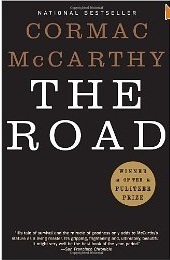 The urge to write first struck David when working on a newsletter at a youth encampment in the woods of northern Maine. Using two fingers and lots of white-out, he religiously typed five pages a day throughout college and well into his twenties. Then life intervened in the way life does, with creating businesses and raising a family becoming his first priorities. When he found time again to daydream, the urge to write returned.
There Comes a Prophet
is his first novel in this new stage of life. He no longer limits himself to five pages a day and is thankful every keystroke for the invention of the word processor.
The urge to write first struck David when working on a newsletter at a youth encampment in the woods of northern Maine. Using two fingers and lots of white-out, he religiously typed five pages a day throughout college and well into his twenties. Then life intervened in the way life does, with creating businesses and raising a family becoming his first priorities. When he found time again to daydream, the urge to write returned.
There Comes a Prophet
is his first novel in this new stage of life. He no longer limits himself to five pages a day and is thankful every keystroke for the invention of the word processor.In this blog post, David describes the inspiration for the book, and how he sees the dystopian world.
Q: How do you see a dystopian world?
A: I think there are three kinds of dystopia:
1) Power driven - the evil one has come to power and is doing bad things (1984, The Hunger Games, Voldemort in the Harry Potter series).
2) The world destroyed. Following some kind of holocaust, society has devolved into chaos (Mad Max, Cormac McCarthy's The Road).
3) Dystopia has been brought on by good intentions.
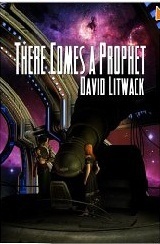 I find the first two to be too black and white and less interesting. They're also too bleak, leaving little room for hope.
There Comes a Prophet
is of the third variety. The founders of the Temple were trying to make the world better. The arch vicar really believed denying the quest for knowledge is not as bad as the consequences of too much knowledge. The book grapples with that premise, leaving open whether it may be true or not. But the innate need of the individual to evolve and grow triumphs over fear.
I find the first two to be too black and white and less interesting. They're also too bleak, leaving little room for hope.
There Comes a Prophet
is of the third variety. The founders of the Temple were trying to make the world better. The arch vicar really believed denying the quest for knowledge is not as bad as the consequences of too much knowledge. The book grapples with that premise, leaving open whether it may be true or not. But the innate need of the individual to evolve and grow triumphs over fear.Q: What sparked your ideas in your novel?
A: As far as insight as to how I came up with the ideas, I've been fascinated by militant groups that condemn the modern world and its obsession with technology, to the point of refusing to allow science to be taught in their schools. Yet at the same time, their entire movement relies on modern medicine, transportation, and communications.
I read a wonderful non-fiction book called The Wealth and Poverty of Nations: Why Some Are So Rich and Some So Poor by David S. Landes. It talks about how Portugal and Spain were economic peers to France and Britain in the 16th century. Then they chose to become rigid theocracies, freezing their cultures and worldviews so their societies stagnated. At the same time, France and England were going through the reformation and the enlightenment. Within a hundred years, their societies had totally eclipsed those of Portugal and Spain.
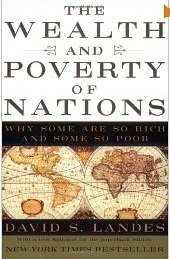 I tried to show this phenomenon through the eyes of three precocious young people who wanted more from life but lived in a world of limits. They were unwilling to challenge the status quo until they learned, partially by accident, how much was possible.
I tried to show this phenomenon through the eyes of three precocious young people who wanted more from life but lived in a world of limits. They were unwilling to challenge the status quo until they learned, partially by accident, how much was possible.Q: What question has never been asked about your book?
A: No one has yet asked me where the title came from. The title, and its full quote from the book of light, are a paraphrase of Deuteronomy 13:1-6, which begins: “If there arise among you a prophet, or a dreamer of dreams, and giveth thee a sign or a wonder… saying, Let us go after other gods, which thou hast not known, and let us serve them; Thou shalt not hearken unto the words. And that prophet, or that dreamer of dreams, shall be put to death.”
Thanks for those compelling insights into your novel. Here’s my review.
Nathaniel, Orah, and Thomas, best friends since childhood, live a peaceful, bucolic existence in Little Pond, a place as small as its name suggests. Their lives are simple, governed by the teachings from the Temple, and the ministrations of the Vicars and their squadron of Deacons. Hints of the past, the ‘darkness’, are resolutely squashed by the Vicars who explain that to doubt is to reject the ‘light’ of their teachings. Subsequently, the perceived ‘magical’ elements of the past are crushed in favor of so-called mystical teachings. For a thousand years, this peaceful existence continues. Nevertheless, secrets have a way of revealing themselves. Nathaniel doesn’t accept the Vicars’ teachings; he believes there is more to life. A legend exists of earlier magic, hidden away in a place called the Keep. The secret path to the Keep has been preserved by Keepers, who will pass on the clues to a group called Seekers. But of course no one dares question the Temple, until Thomas is taken away for a ‘teaching,’ and comes back broken in mind and spirit. Seeds of rebellion grow in Nathaniel, and come to fruition when his friend Orah is taken. Determined to save her, Nathaniel ends up in the prisons of Temple City, and finds out the truth from a long-time prisoner. Armed with knowledge, he sets forth with Thomas and Orah to find the Keep. Can they survive the journey, and can they inspire their people to realize the truth behind the Temple? Will the fulfilment of their mission destroy their world?
Author David Litwack has created a believable dystopian world devoid of technology. Technology overtook humanity (perhaps a salutary lesson here?), and led to social collapse. Hints of the hideous effects of indoctrination in a totalitarian society remind us of the dangers of the suppression of knowledge. This is a coming-of-age story, a tale of friendship and loyalty, and of self-discovery and self-belief. Each of the friends discovers their own talents, and with that, their purpose in life. The author takes a philosophical approach and engages readers in ideas of freedom and choice, both personal and of thinking. This is such a well-written book, with so many thought-provoking ideas that I am sure readers will thoroughly enjoy it and appreciate the author’s message.
Published on August 15, 2012 23:47
August 14, 2012
Creating a Legend: Sherlock Holmes
Imagine creating a character so popular that when you get bored with him, and try to kill him off, your readers rail against you. Finally, public opinion forces you to resurrect your creation. This is exactly what happened to Sir Arthur Conan Doyle, the creator of the world’s greatest detective (apart from Hercule Poirot who considers himself the world’s greatest detective).
Sherlock Holmes is an unforgettable character that has possibly changed the literary face of detectives. A London-based “consulting detective” whose abilities border on the phenomenal, Holmes is famous for his astute logical reasoning, his chameleon like ability to change his appearance, and his use of forensic science skills to solve difficult cases.
The Guinness World Records has consistently listed Sherlock Holmes as the “most portrayed movie character” with 75 actors playing the part in over 211 films.
Conan Doyle wrote the first set of stories over the course of a decade. Wanting to devote more time to his historical novels, he killed off Holmes in The Adventure of the Final Problem , which appeared in print in 1893. Conan Doyle considered the Holmes stories light reading, money spinners, but quickly forgotten, the literary equivalent of airport fiction.
“I couldn’t revive him if I would, at least not for years,” he wrote to a friend who urged Holmes' resurrection, “for I have had such an overdose of him that I feel towards him as I do towards pâté de foie gras, of which I once ate too much, so that the name of it gives me a sickly feeling to this day.”
The public reaction to Holmes's death was astonishing. People behaved as if Sherlock Holmes was a real person, so strongly had the great detective’s quirks and characteristics imprinted themselves on readers’ minds. They even wore black armbands and wrote Conan Doyle both pleading and threatening letters. No author likes being told what to write and it was a long nine years before he capitulated to public opinion and brought Holmes back. After Conan Doyle revived Holmes, he continued to write Holmes stories for another 24 years.
Sherlock Holmes aficionados refer to the period from 1891 to 1894--the time between Holmes's disappearance and presumed death in The Adventure of the Final Problem (at the hands of Moriarity at Reichenbach Falls) and his reappearance in The Adventure of the Empty House --as "the Great Hiatus."
So, what really happened during these lost years?
Holmes tells Dr. Watson in laconic fashion: "I travelled for two years in Tibet, therefore, and amused myself by visiting Lhasa and spending some days with the head Lama."
Two years is a long time. There must have been more to it than that, but without Dr. Watson as the faithful scribe, how could anyone know the truth?
Author Jamyang Norbu offers an explanation in The Mandala of Sherlock Holmes , a non-canonical Sherlock Holmes pastiche novel.
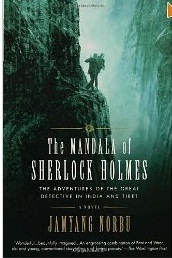 Holmes and Moriarty struggle at the Reichenbach FallsAfter surviving the incident at the Reichenbach Falls, Holmes travels east to escape Moriarty's henchmen. One wonders, if Holmes survived, what happened to Moriarty? His agents are still active, it seems. In India, Holmes meets a Bengali spy, Huree Chunder Mookherjee, assigned to accompany and protect Holmes during his mission to Tibet, for mission it was. Holmes has adopted the disguise of a Norwegian explorer called Sigerson so that he is able to protect the young 13th Dalai Lama from assassination by a Chinese-backed evil sorcerer, whose secret identity will come as no surprise when revealed. Holmes, ever pragmatic, finds himself at the mercy of mystical elements that almost (but not quite) overpower him as his expedition leads him into the fabled Shambala and events beyond common understanding. Mookherjee admirably takes on the role of narrator, with a quaint turn of phrase and shocked exclamations as things become considerably more dangerous with every passing day. A helpful glossary at the back of the book assists readers with unfamiliar words and phrases.
Holmes and Moriarty struggle at the Reichenbach FallsAfter surviving the incident at the Reichenbach Falls, Holmes travels east to escape Moriarty's henchmen. One wonders, if Holmes survived, what happened to Moriarty? His agents are still active, it seems. In India, Holmes meets a Bengali spy, Huree Chunder Mookherjee, assigned to accompany and protect Holmes during his mission to Tibet, for mission it was. Holmes has adopted the disguise of a Norwegian explorer called Sigerson so that he is able to protect the young 13th Dalai Lama from assassination by a Chinese-backed evil sorcerer, whose secret identity will come as no surprise when revealed. Holmes, ever pragmatic, finds himself at the mercy of mystical elements that almost (but not quite) overpower him as his expedition leads him into the fabled Shambala and events beyond common understanding. Mookherjee admirably takes on the role of narrator, with a quaint turn of phrase and shocked exclamations as things become considerably more dangerous with every passing day. A helpful glossary at the back of the book assists readers with unfamiliar words and phrases.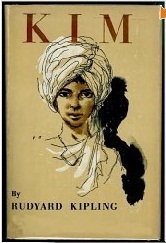 The author draws heavily on books and descriptions of the era, notably Kipling's Kim and Charles Allen’s Plain Tales from the Raj. I loved this book, although the plot veers into a kind of mysticism, which Conan Doyle is more famous for, than his creation. However, the Great Game is wonderfully evident. Holmesian aficionados will not be disappointed although some Baker Street purists might disapprove. The author has captured Holmes' dry wit and abrasive, often mercurial personality.
The author draws heavily on books and descriptions of the era, notably Kipling's Kim and Charles Allen’s Plain Tales from the Raj. I loved this book, although the plot veers into a kind of mysticism, which Conan Doyle is more famous for, than his creation. However, the Great Game is wonderfully evident. Holmesian aficionados will not be disappointed although some Baker Street purists might disapprove. The author has captured Holmes' dry wit and abrasive, often mercurial personality.There are several extremely amusing references in this helter-skelter tale of darkness and derring-do. Note: readers who wondered about the Giant Red Leech, hinted at by Watson, will have their questions answered here. I thought the book admirably echoed the tradition of Conan Doyle and Holmes' many adventures.
A sad, one could say tragic element of the story is the author's concern with China's occupation of Tibet. He weaves in a pertinent political message, but in a subtle way that never interferes with the story.
Published on August 14, 2012 08:48



